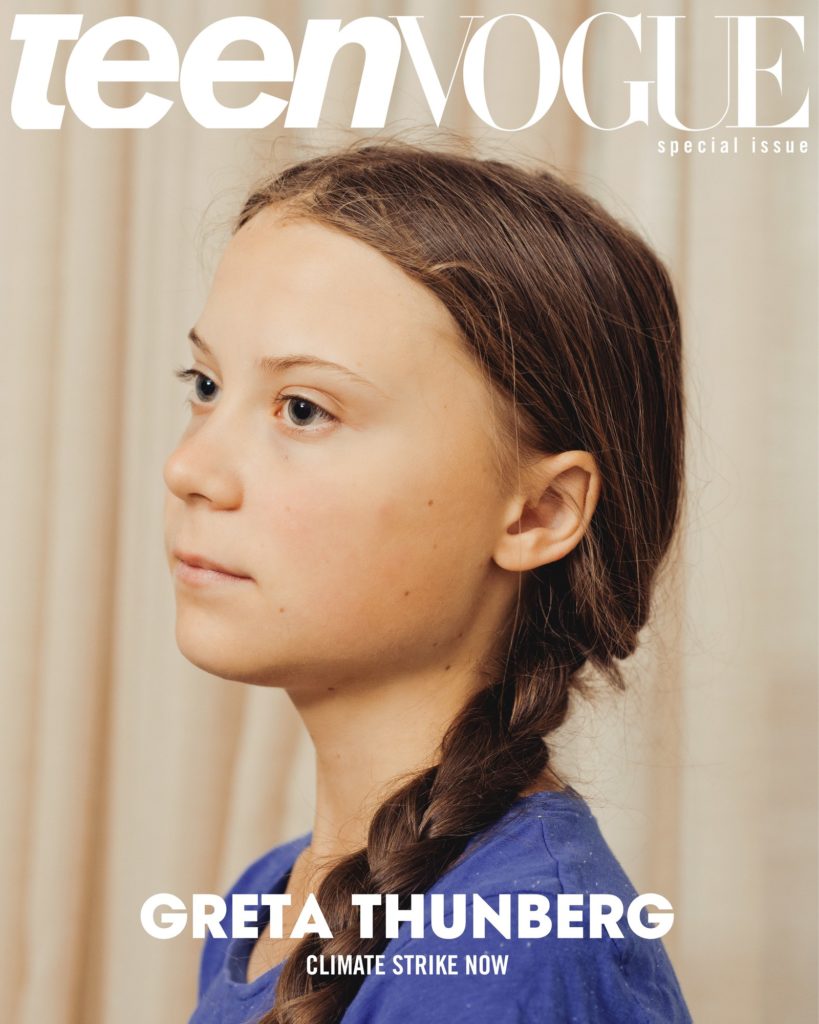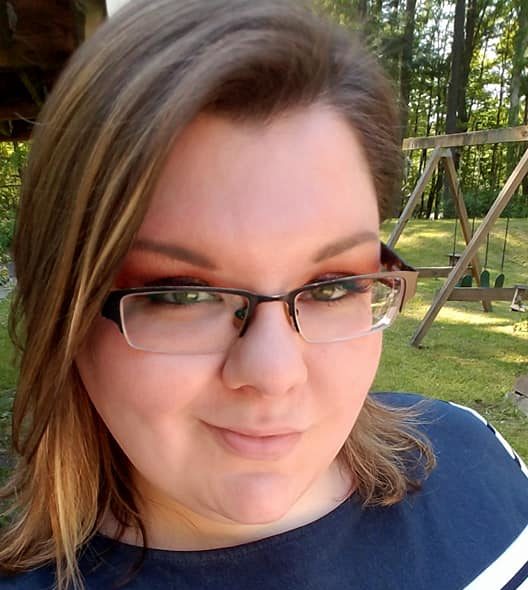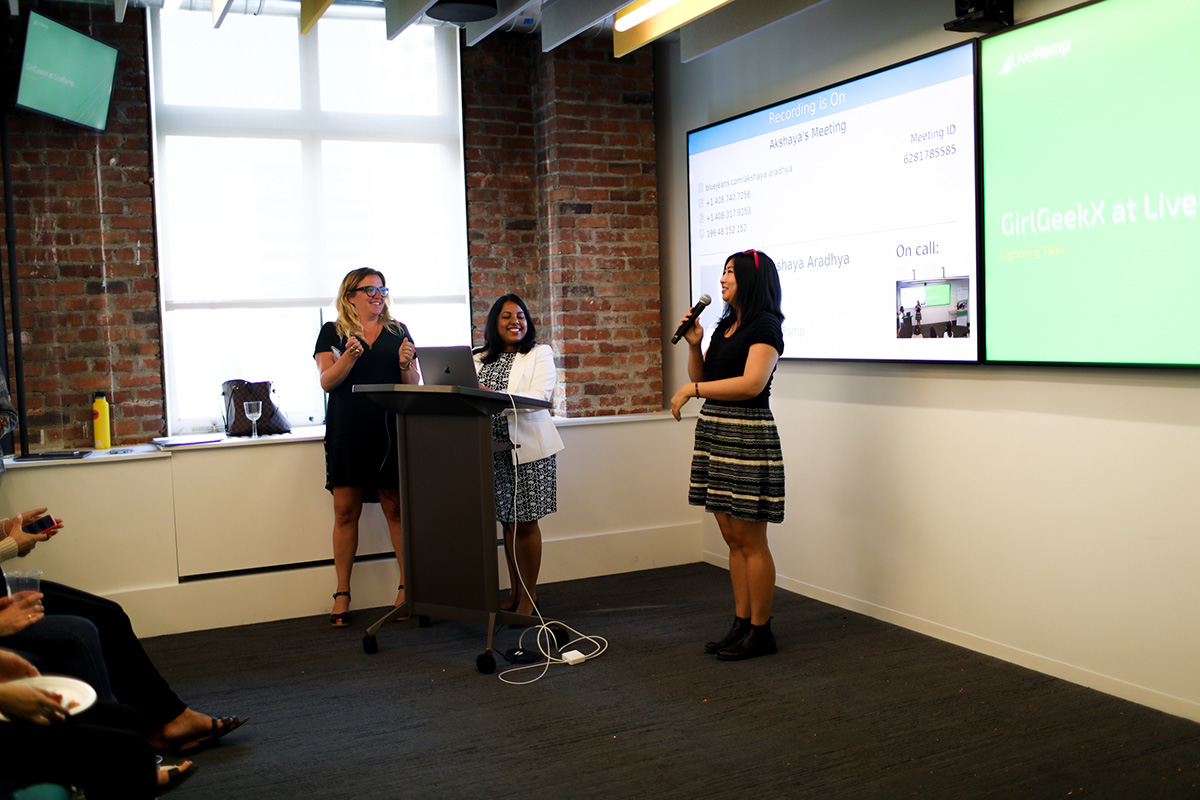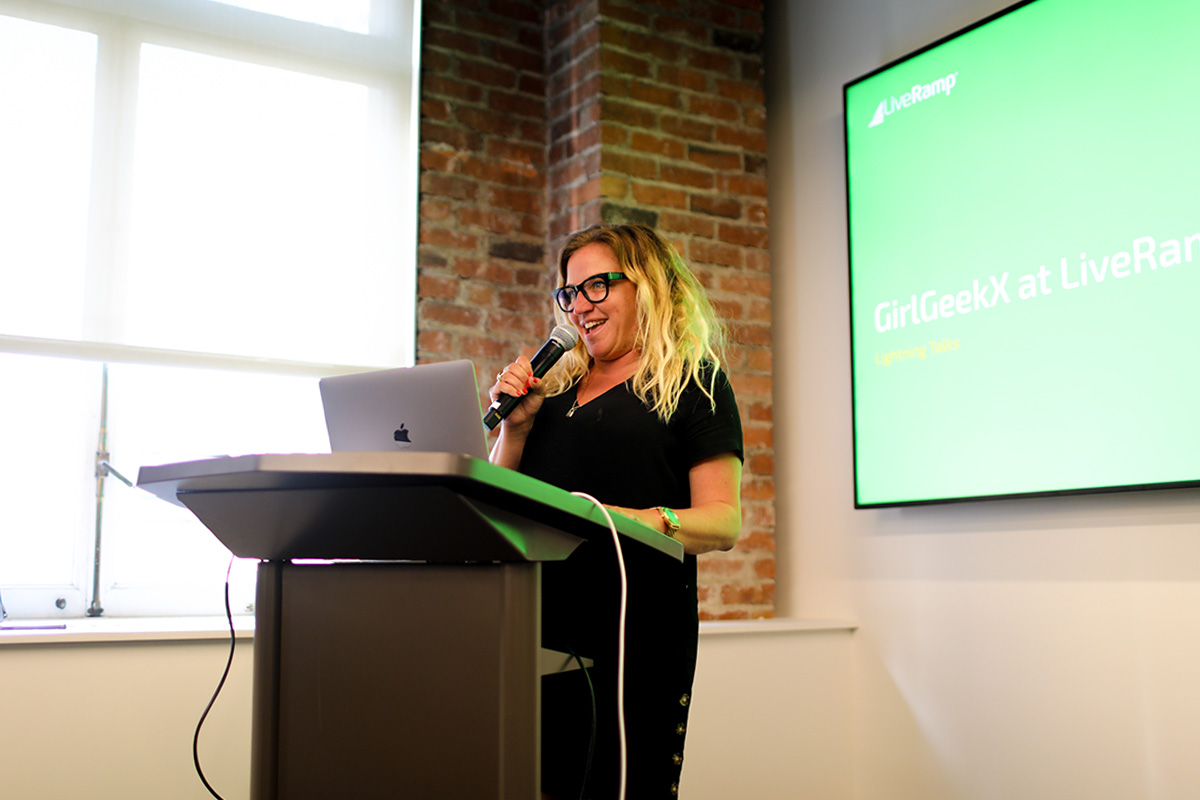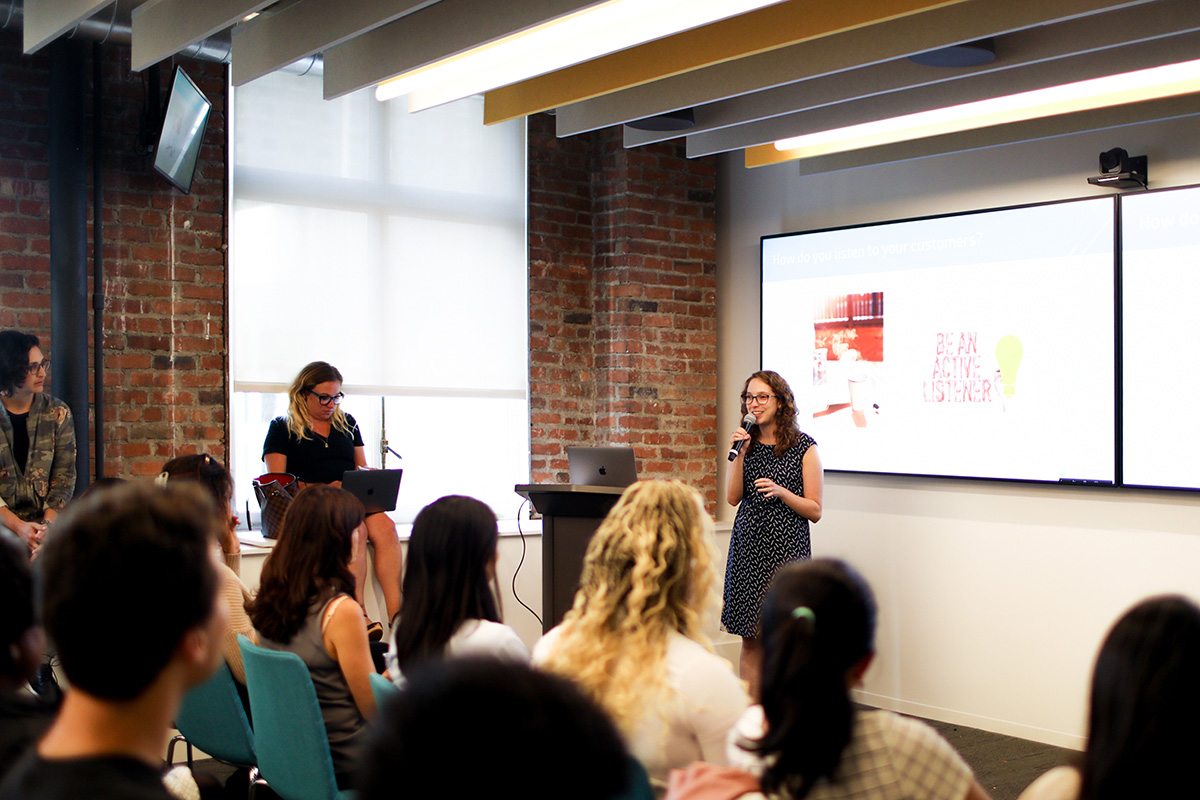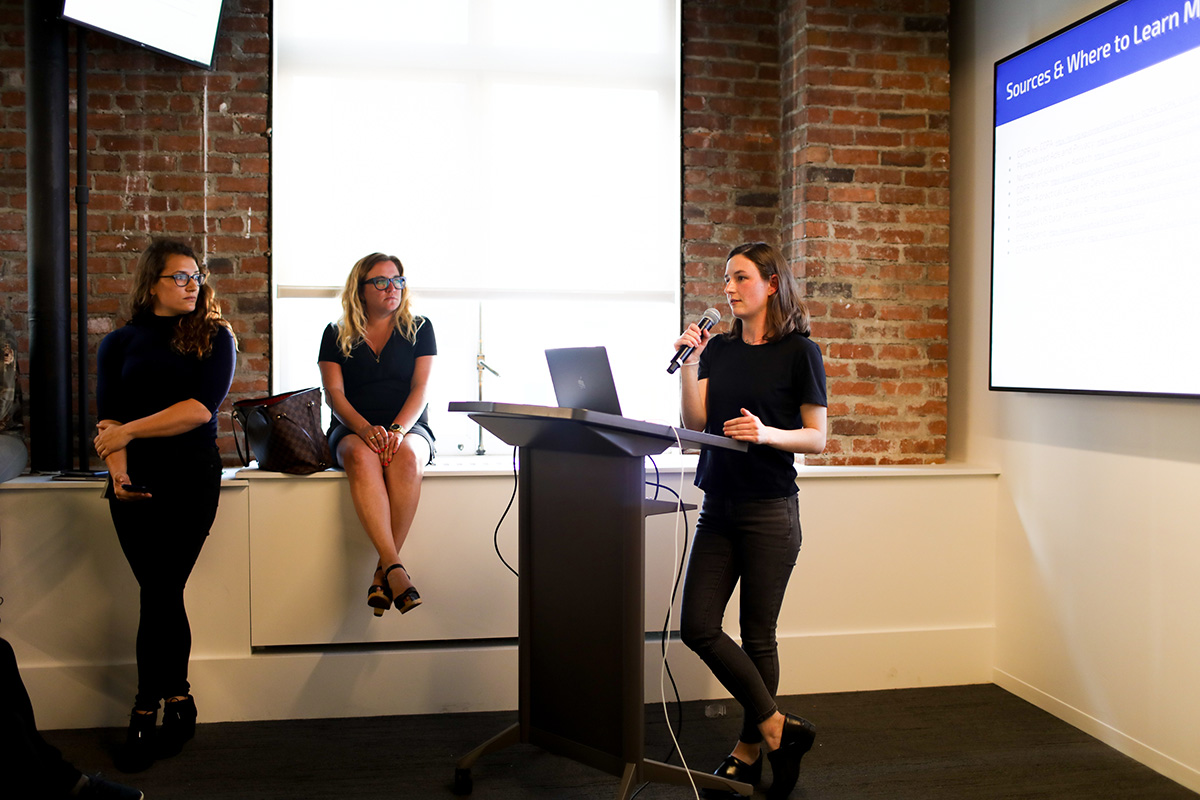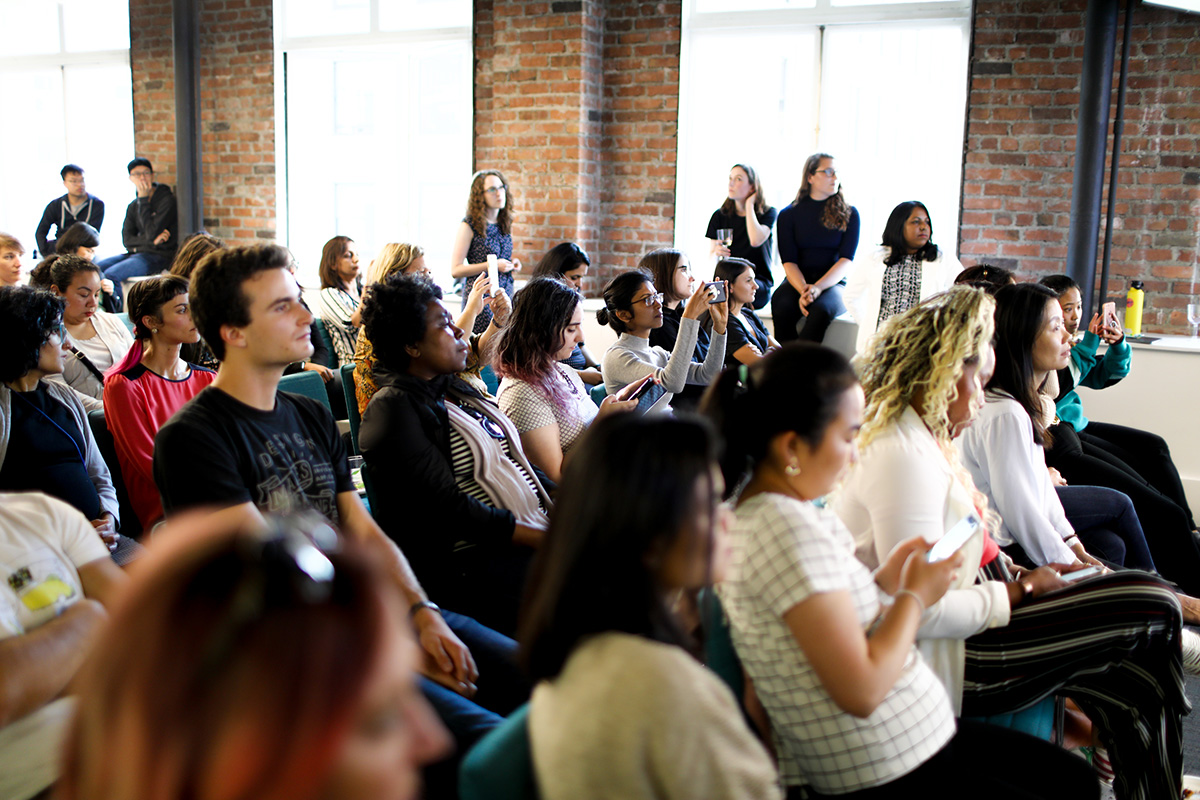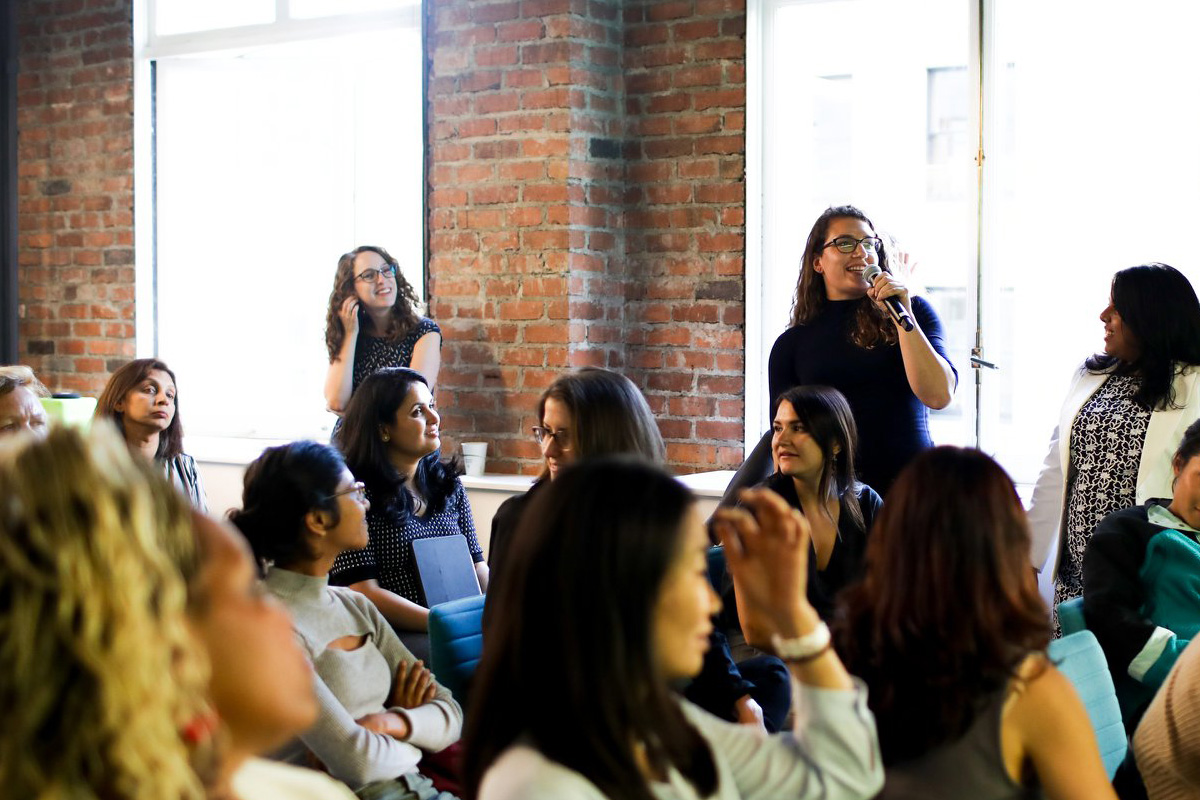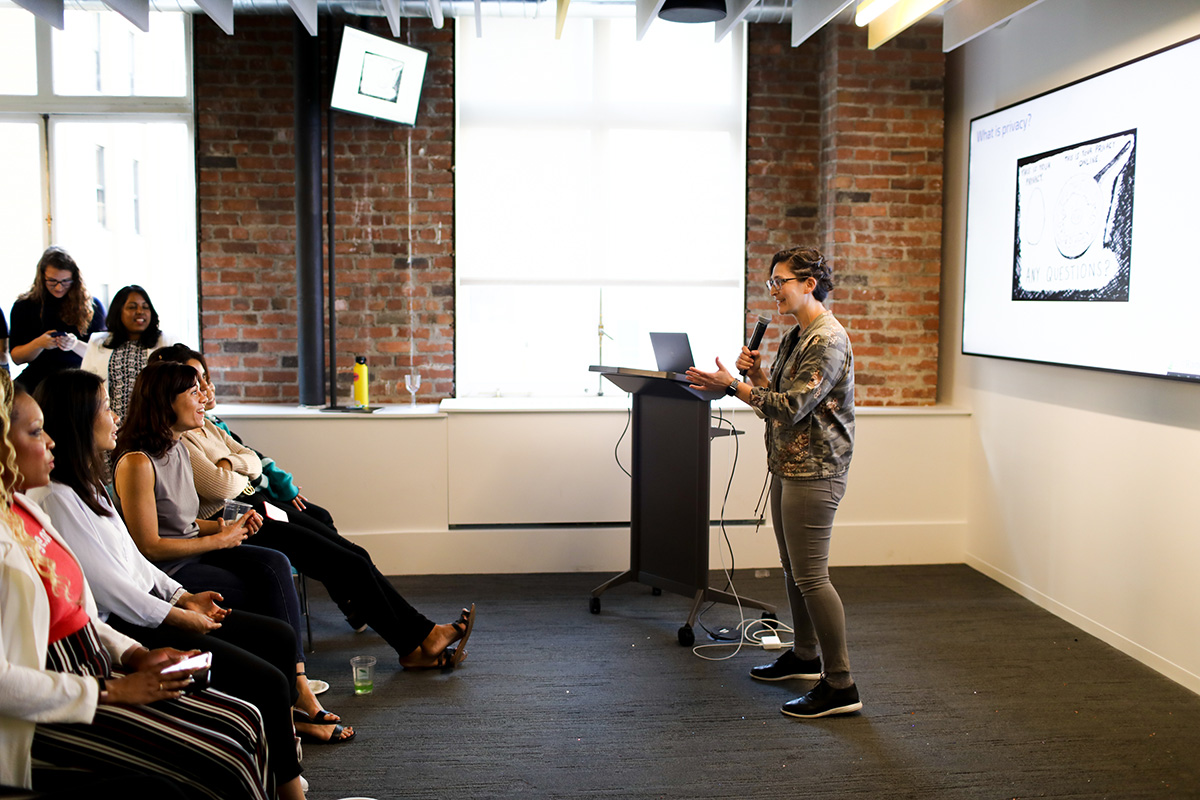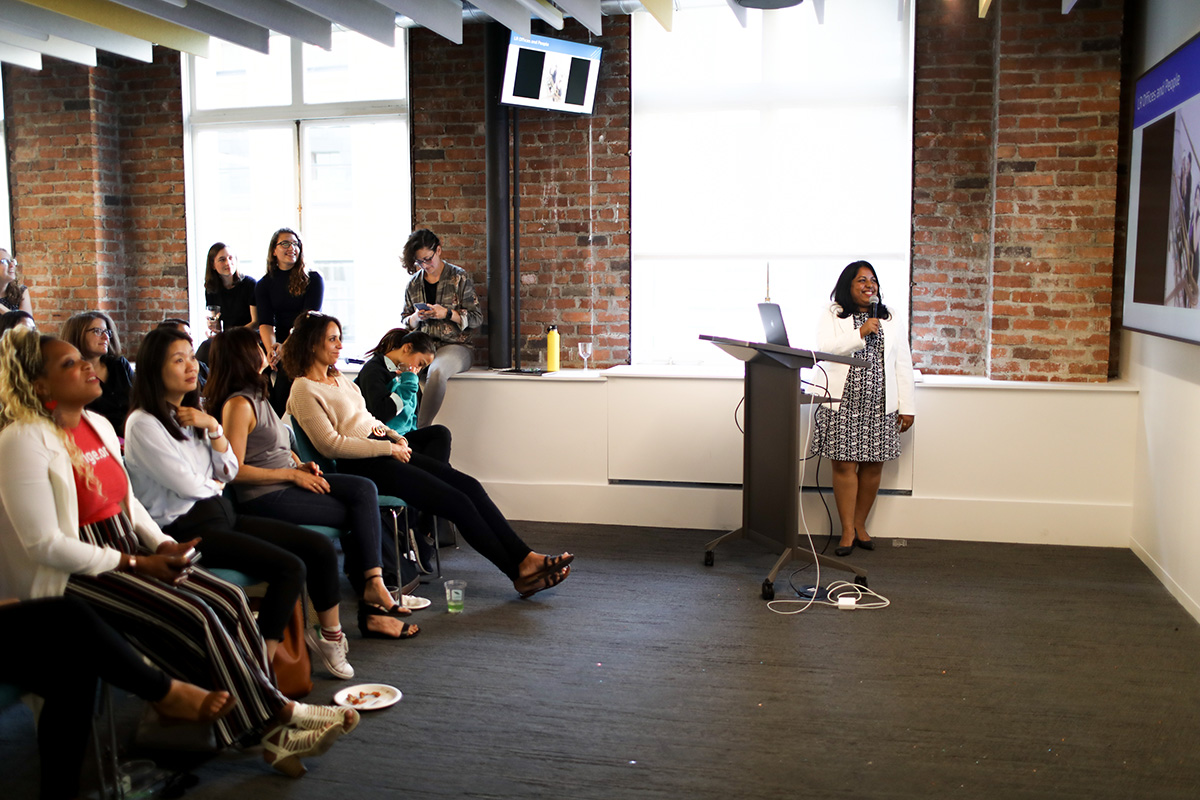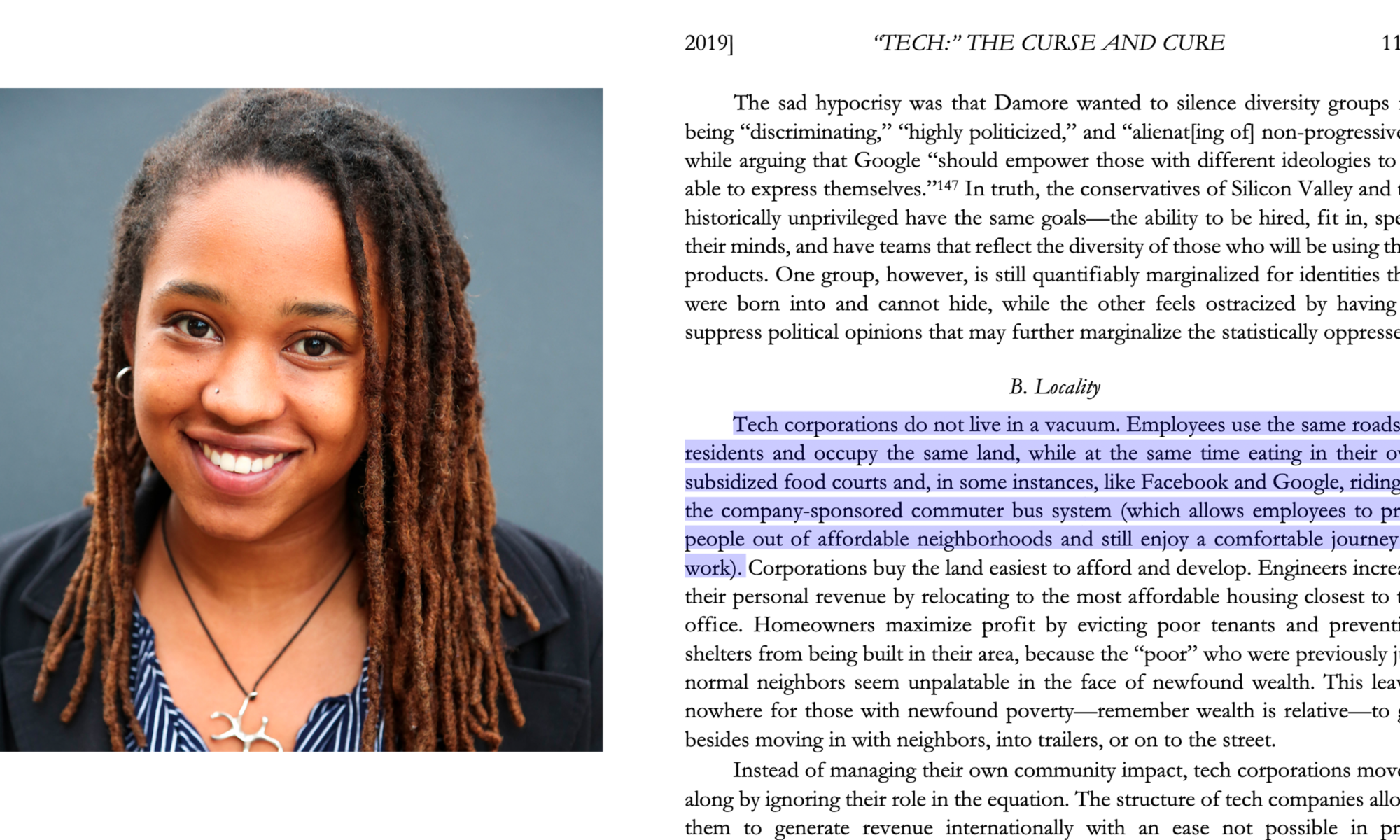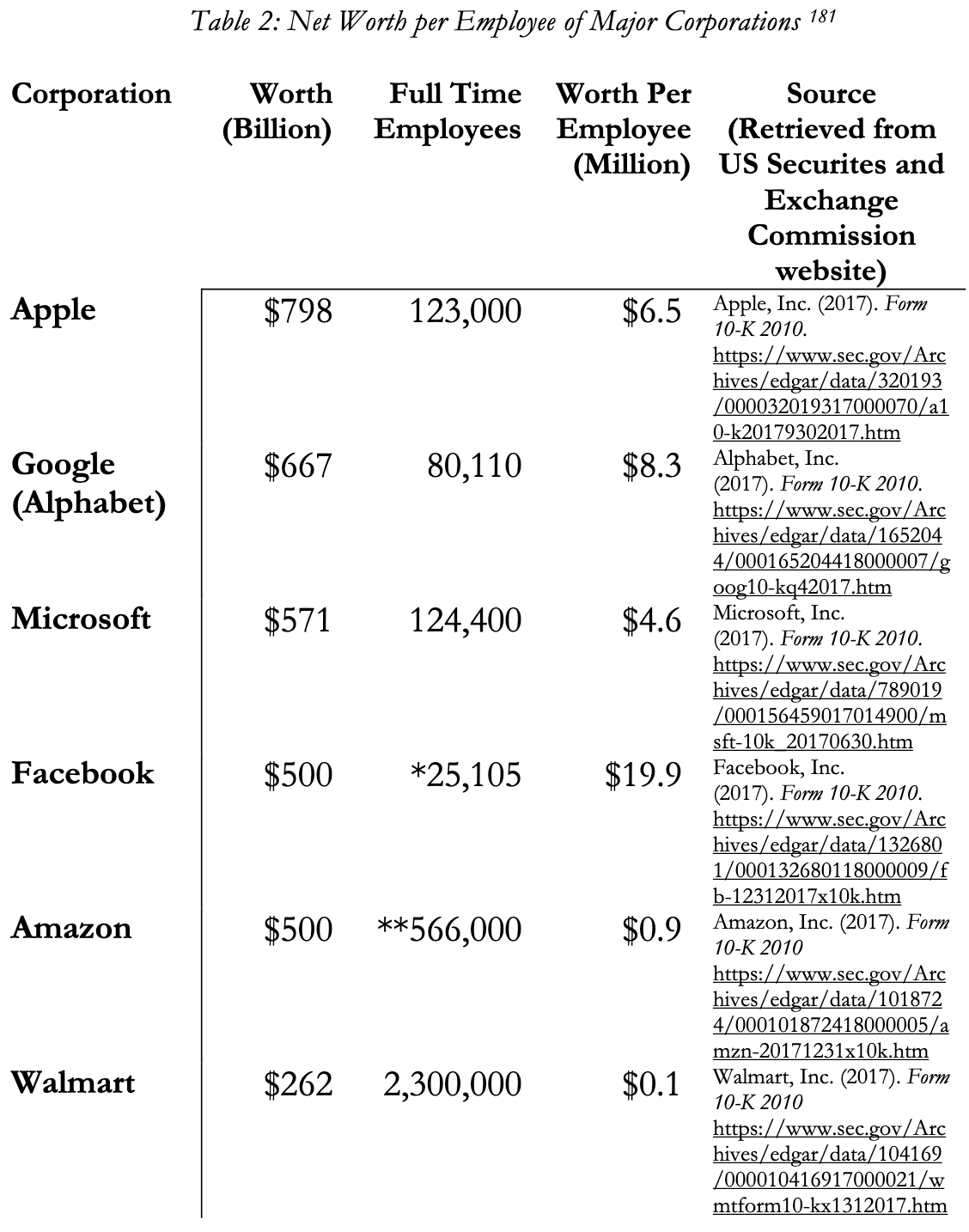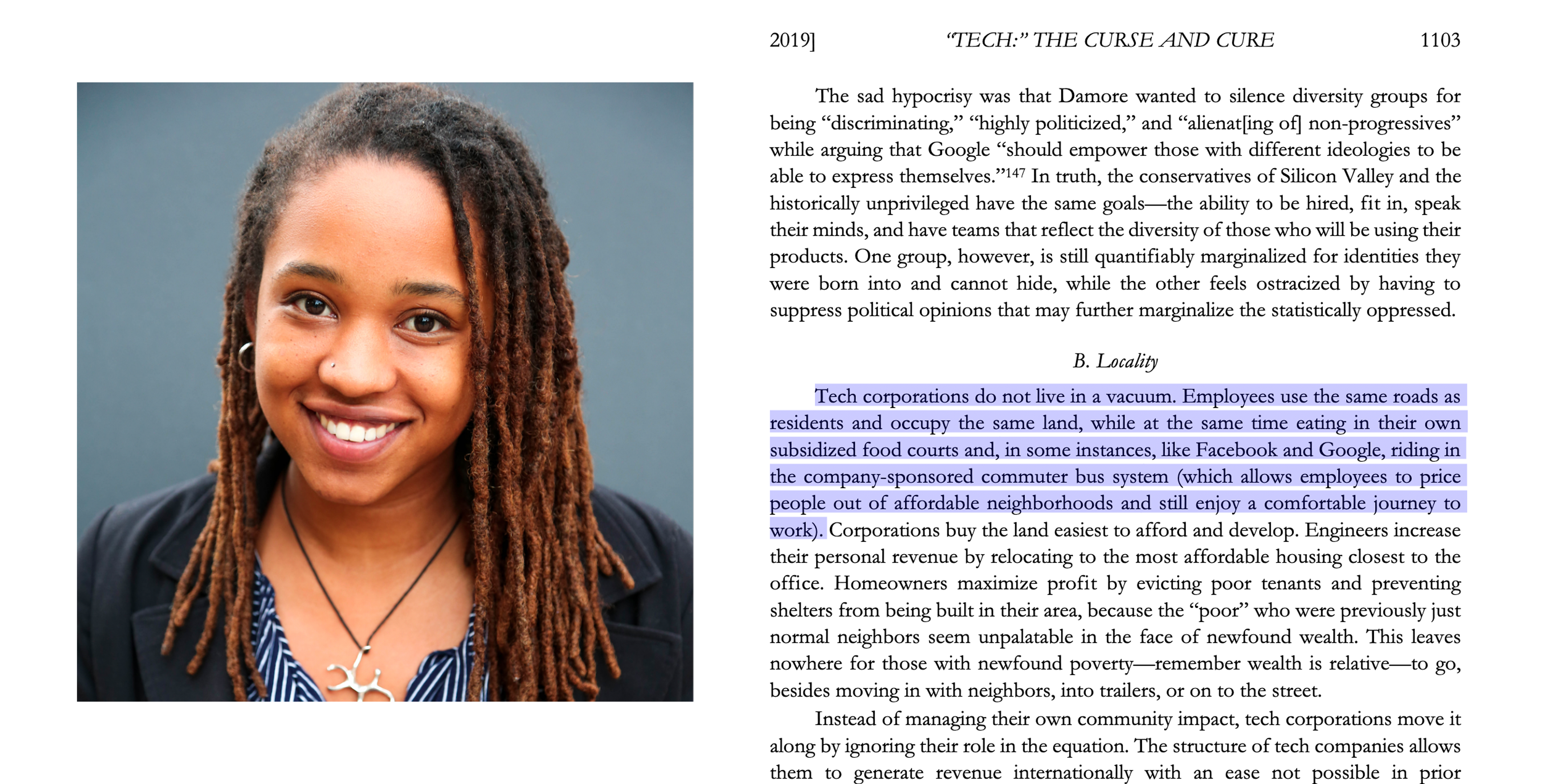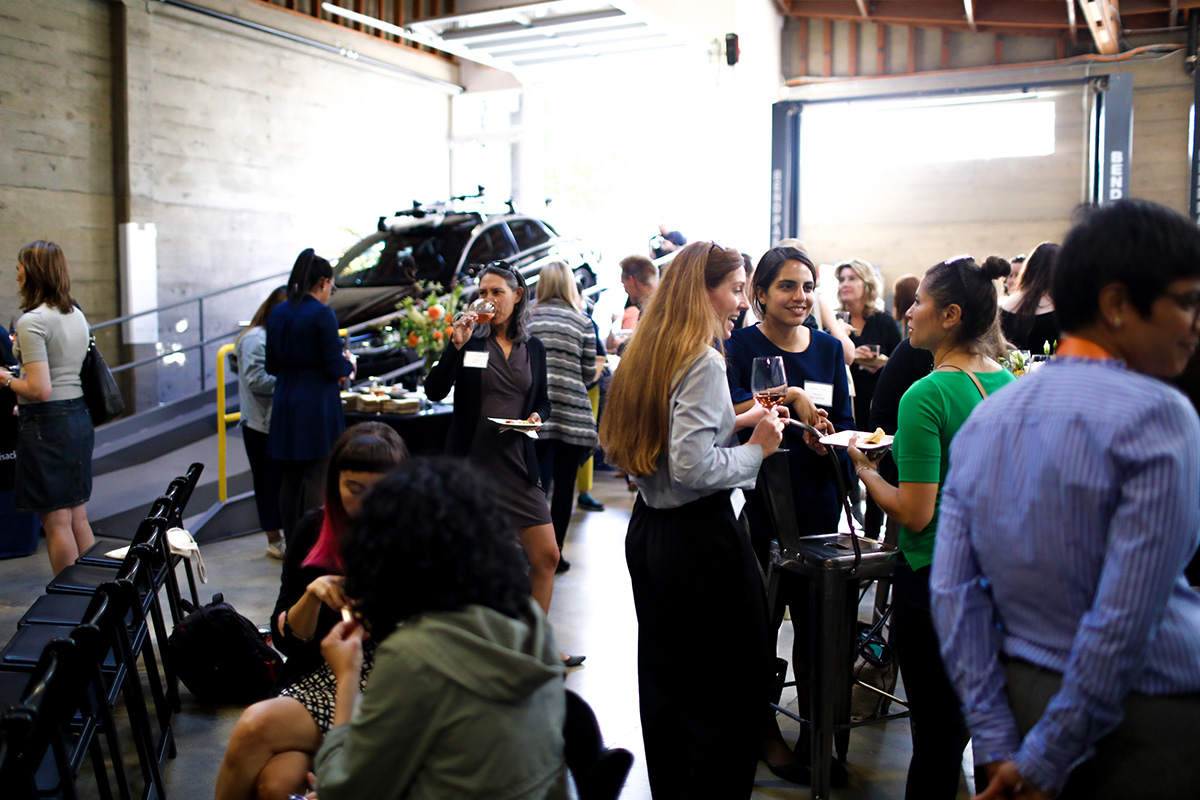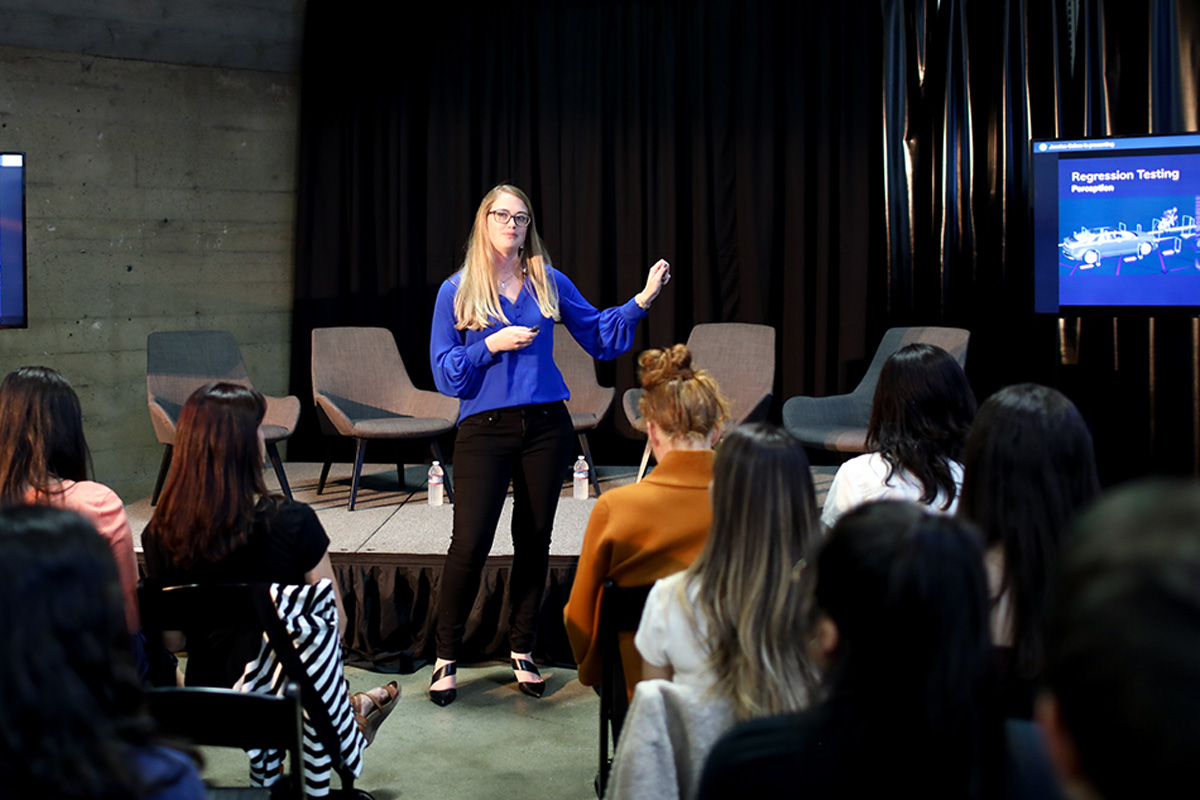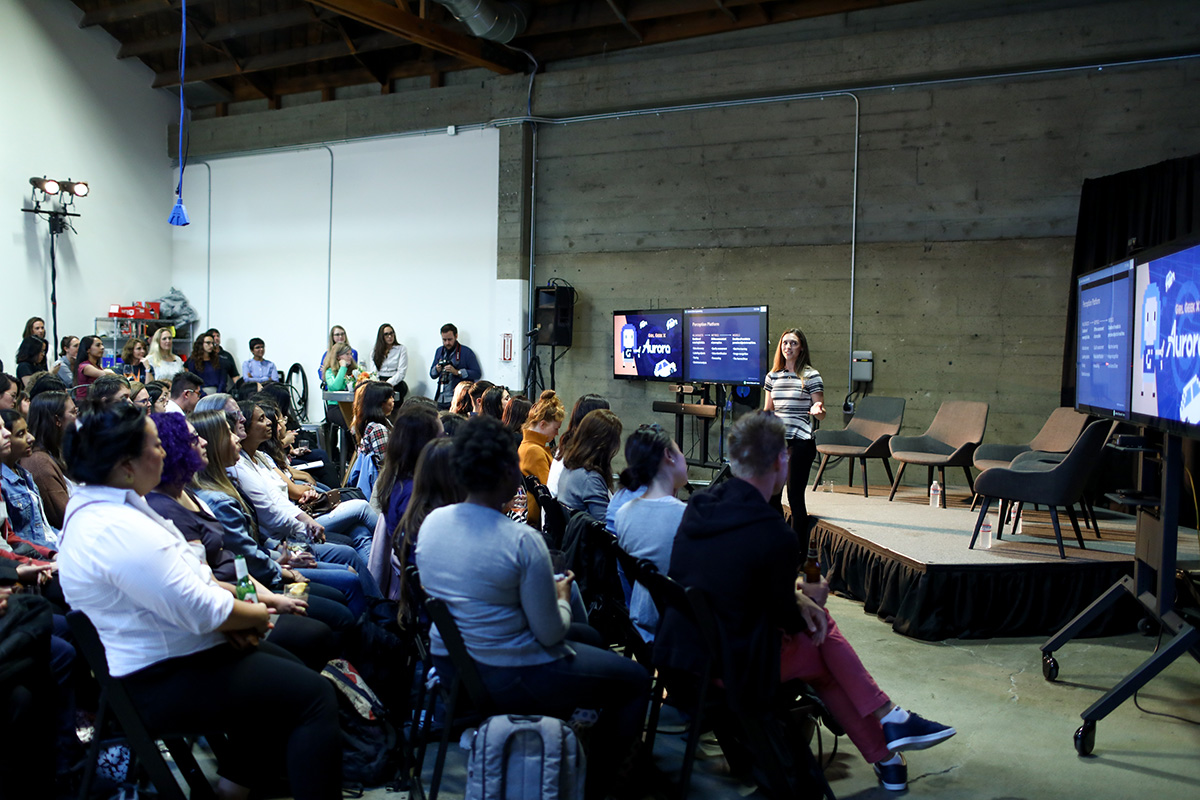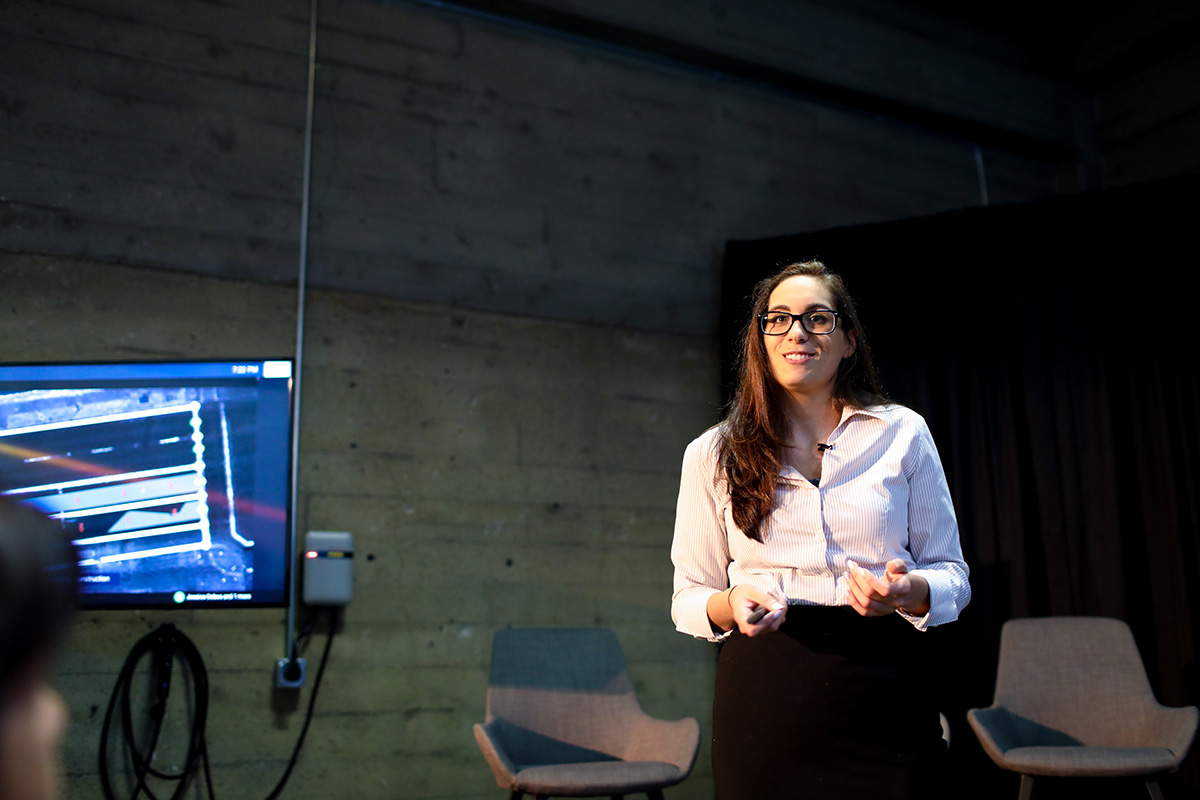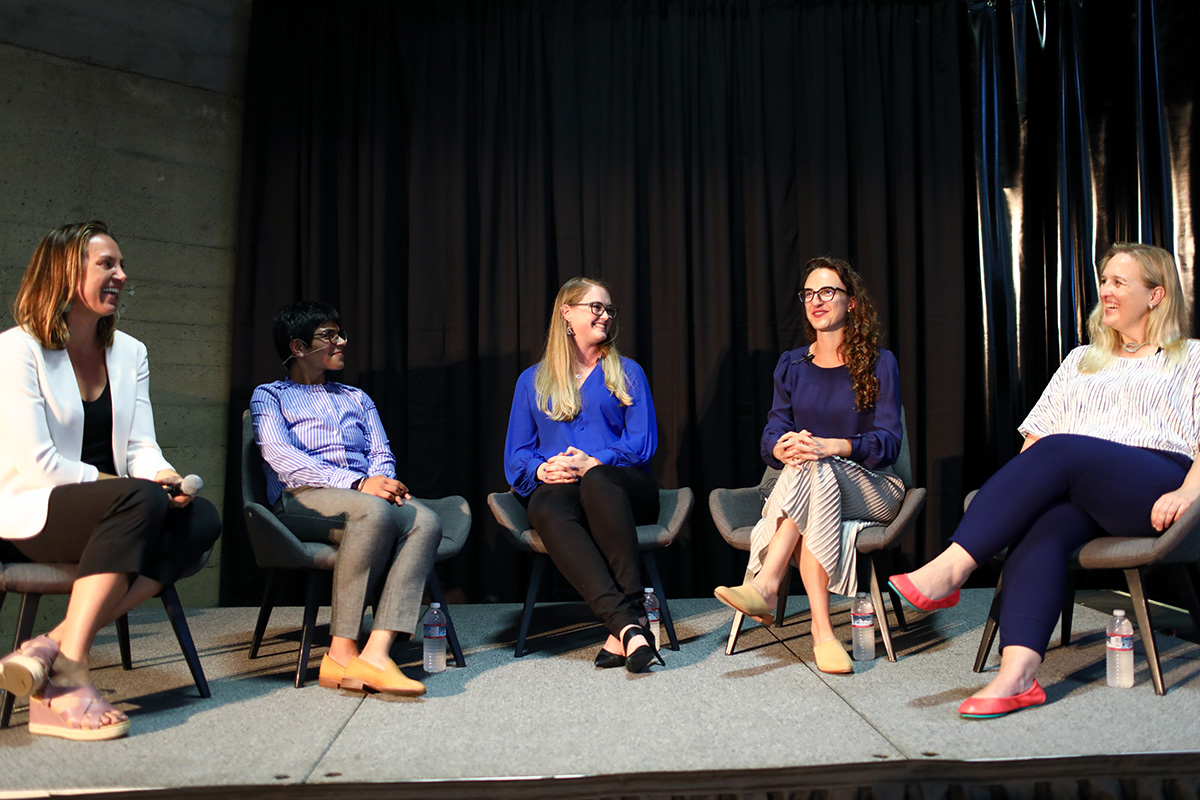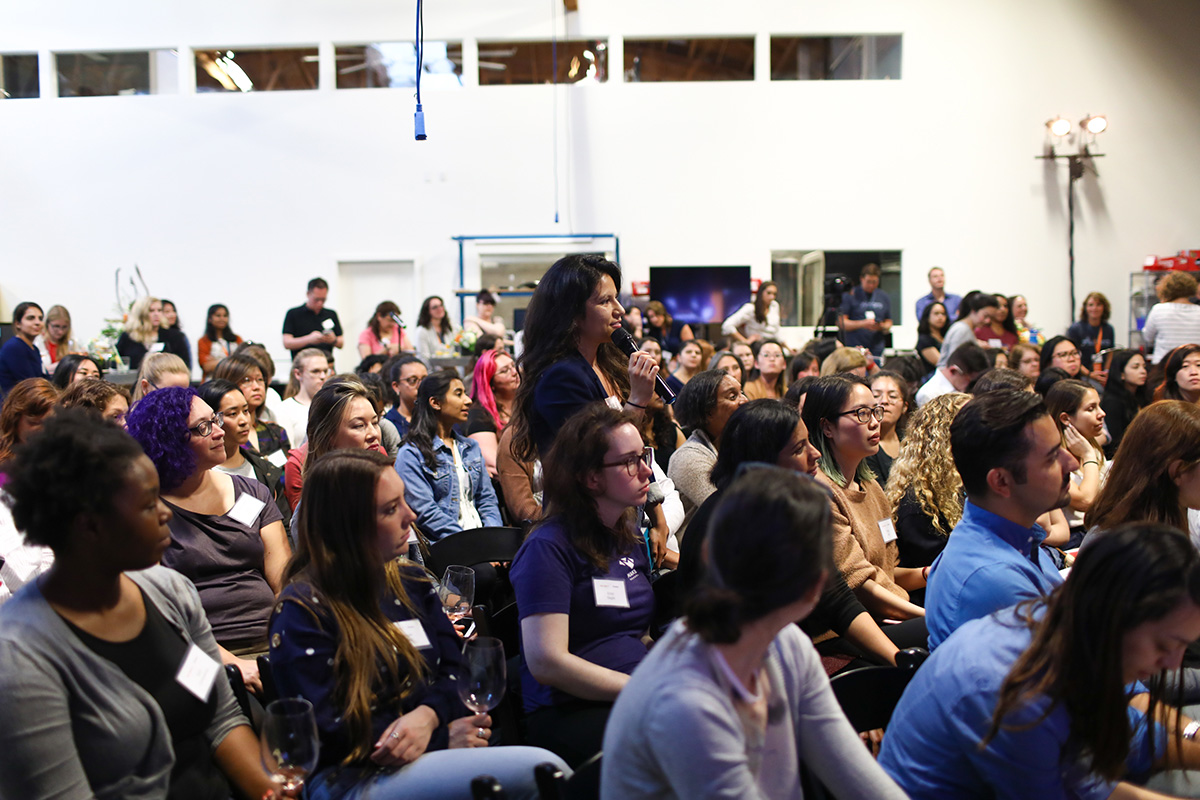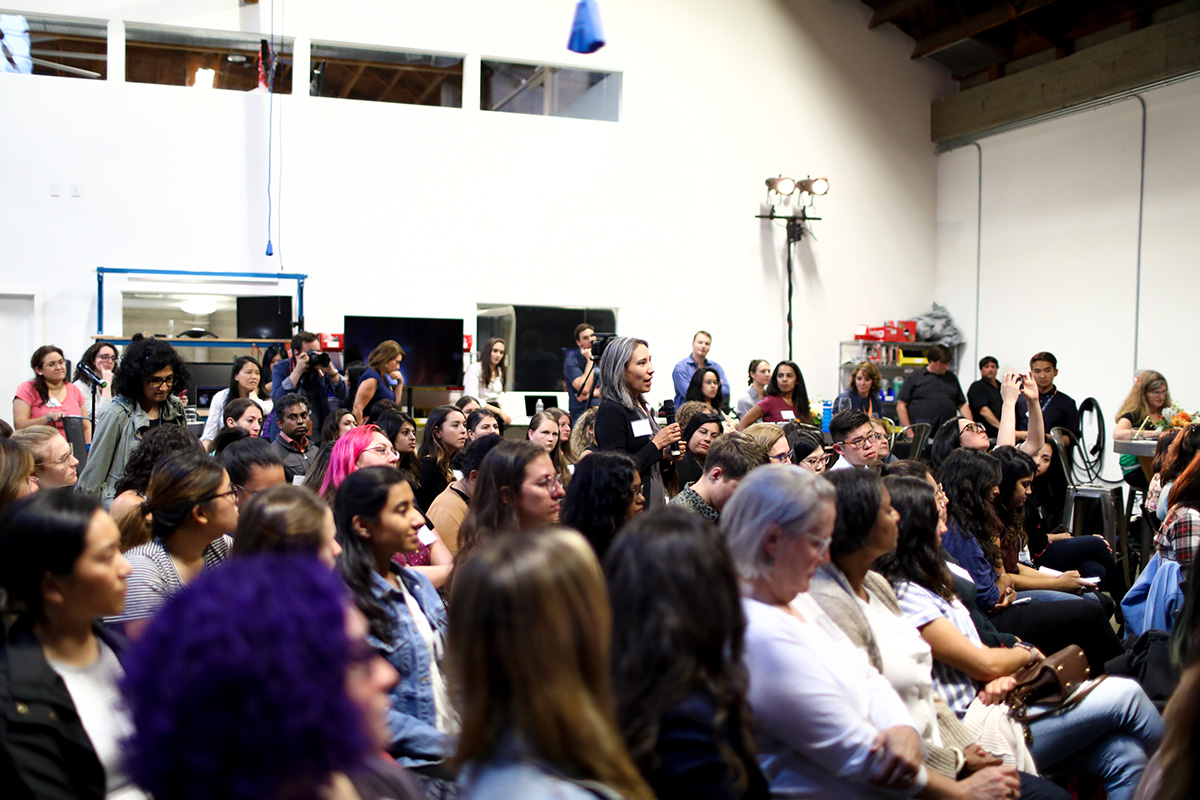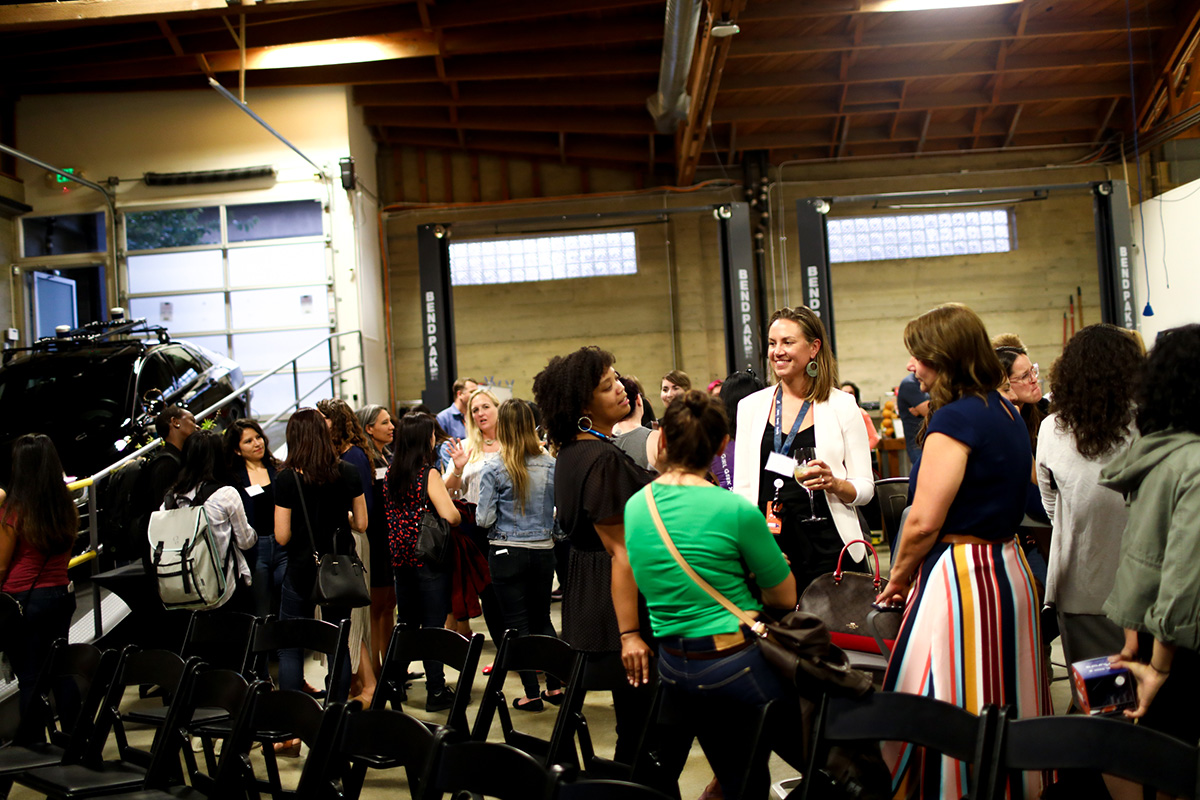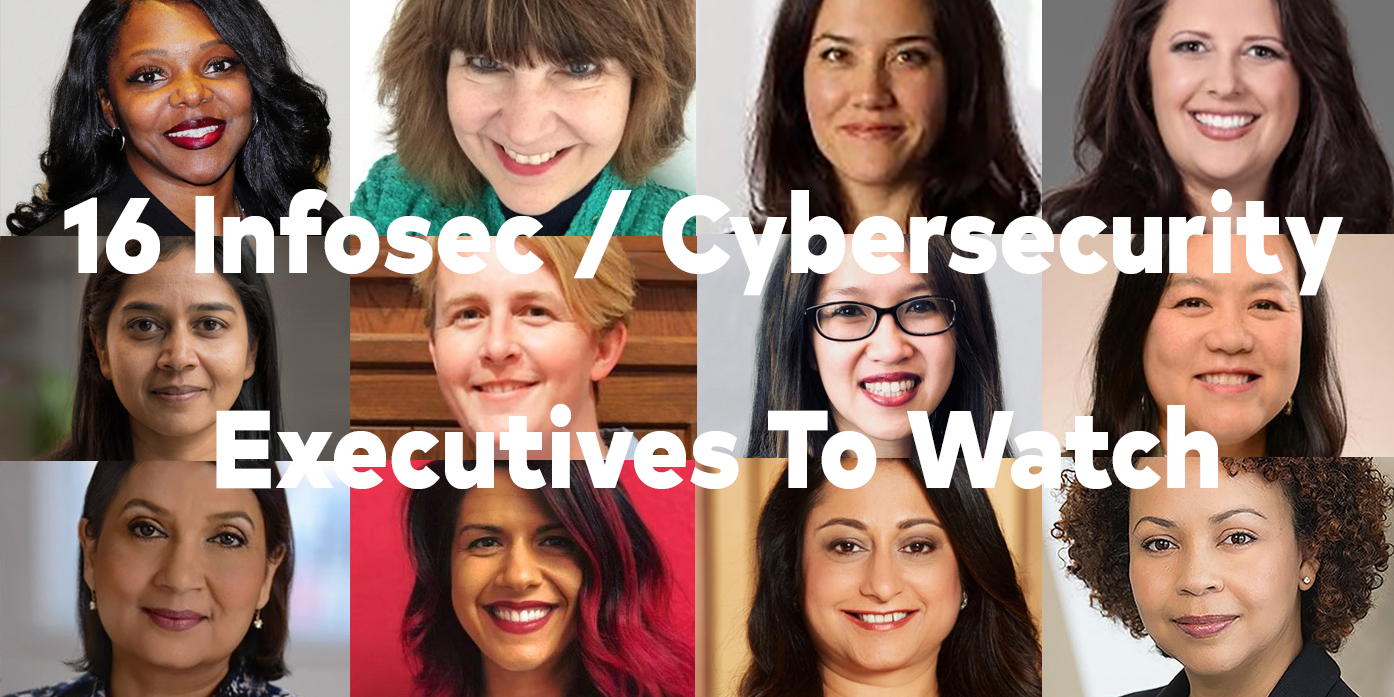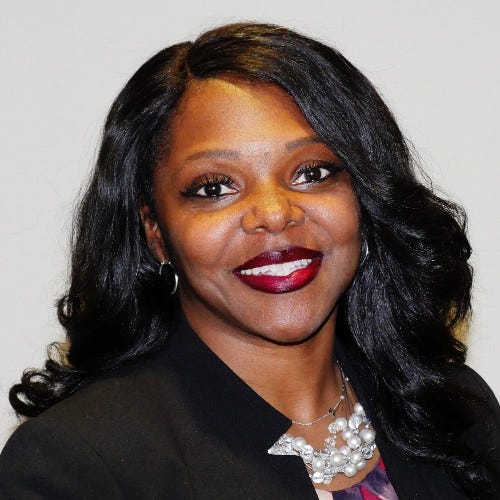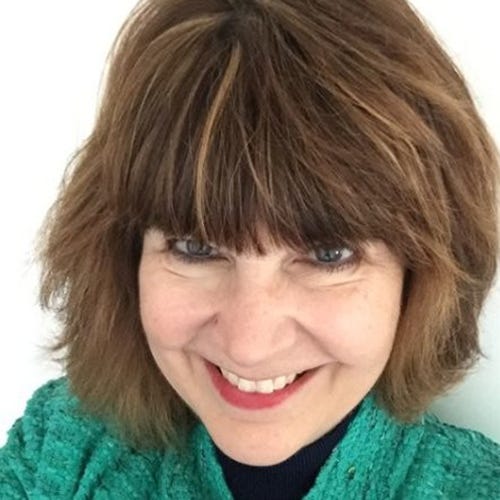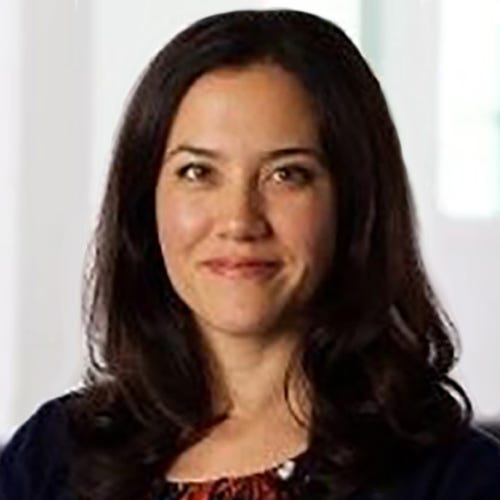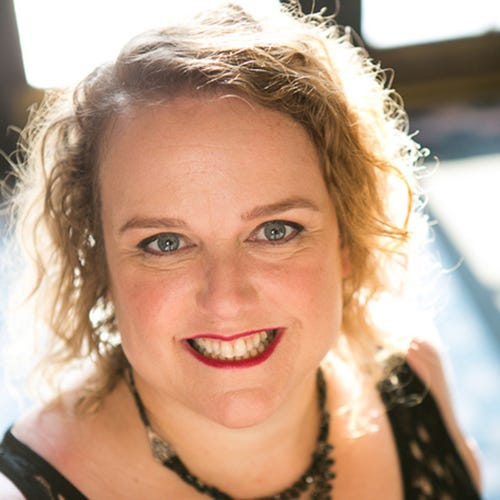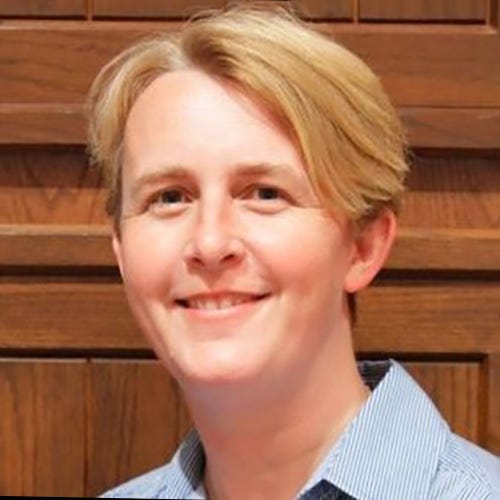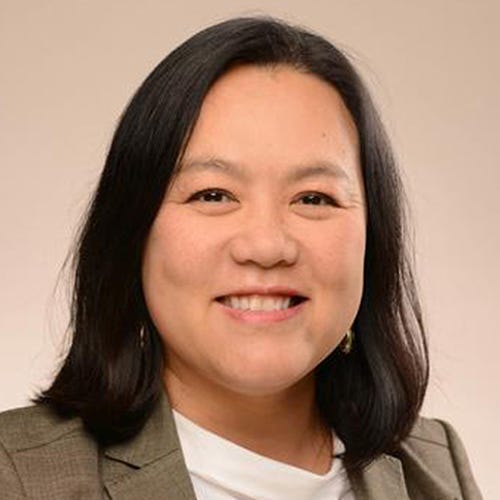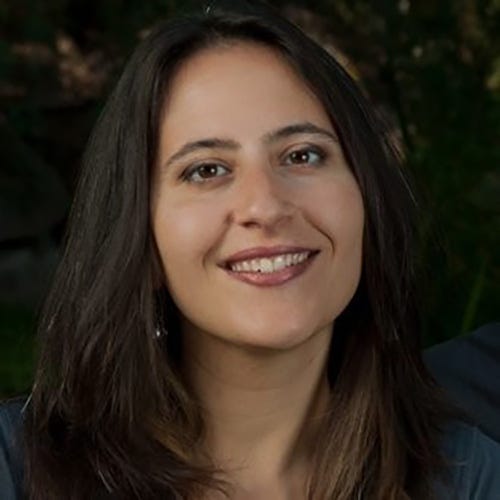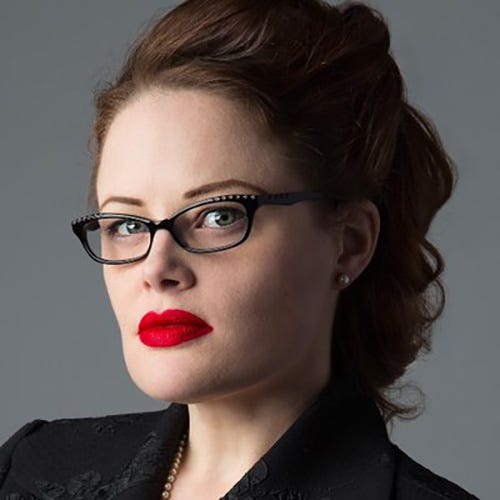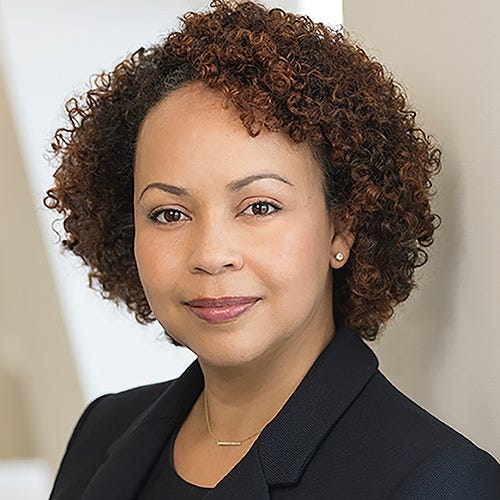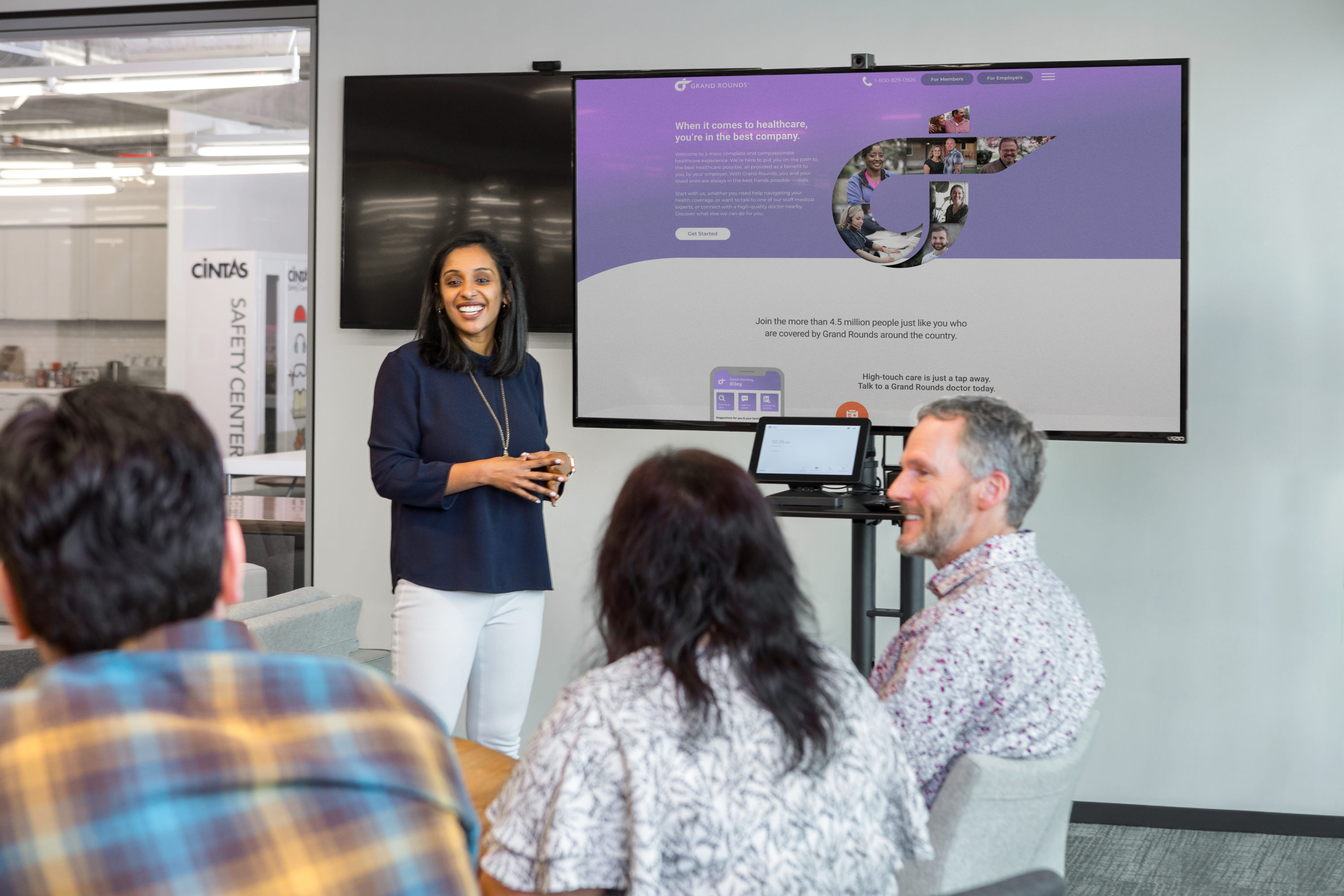Like what you see here? Our mission-aligned Girl Geek X partners are hiring!
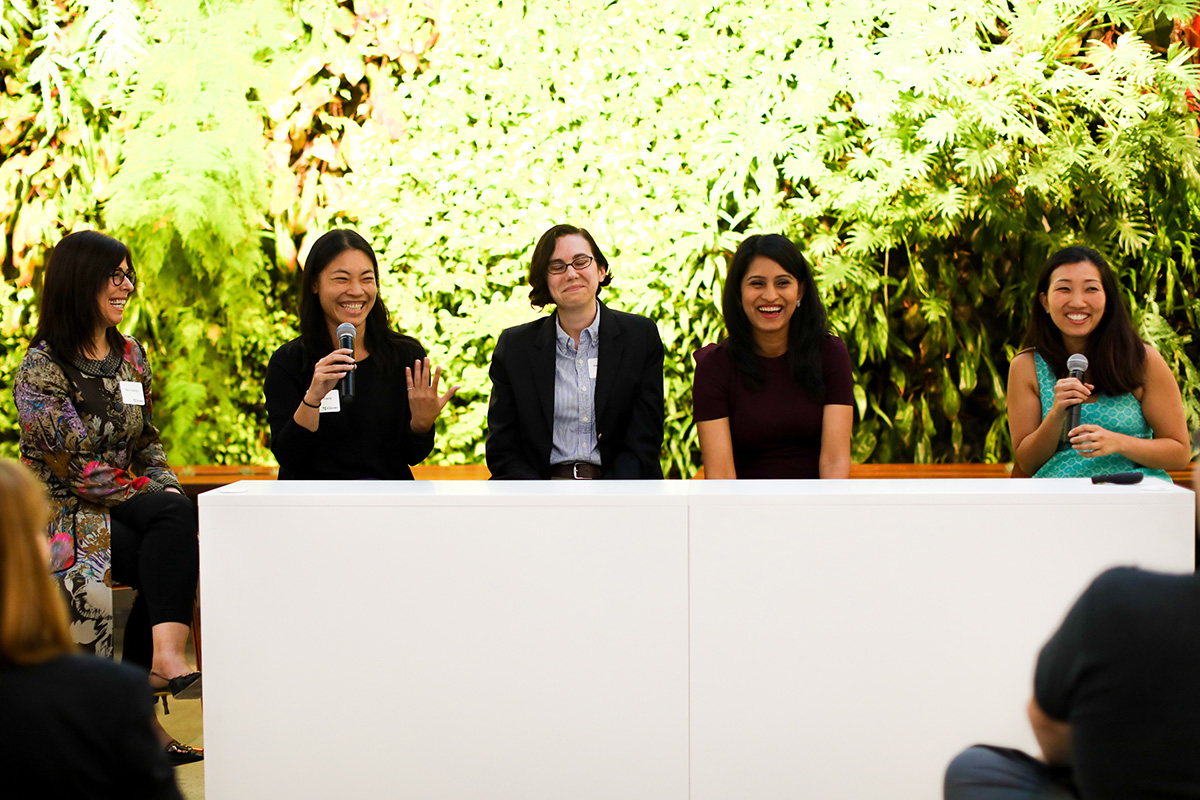
Clover girl geeks: Mary Uslander, Ellen Linardi, Rachel Ramsay, Meghana Randad and Bao Chau Nguyen speak on a panel at Clover Girl Geek Dinner in Sunnyvale, California. Erica Kawamoto Hsu / Girl Geek X
Transcript of Clover Girl Geek Dinner – Lightning Talks & Panel:
Gretchen DeKnikker: Hi, I’m Gretchen, I’m with Girl Geek X. Welcome. How many of you guys, this is your first event? Oh wow, that’s so many. We’ve been doing these for about 11 years. We’ve done over 200 of them. We do them almost every week, up and down the peninsula, so hopefully you should be on our … That’s all right, I can definitely talk over that. We do them every week and you should come because you get to see amazing women, you get to meet amazing women, and you get to feel inspired so that you can go back and fight the good fight every single day, right? Yes.
Gretchen DeKnikker: We do a podcast also, if you want to check it out. We take like little clips from these events, and then we chitchat around them. So, there’s like finding a mentor, and what’s the right way to use the word intersectionality, and all sorts of really important life skill things. Definitely find it, rate it, keep it, and tell us if it’s any good, because we’ve never done a podcast before so we’re still figuring it out. Then finally, we just launched a store on Zazzle with all of our cute little Pixie things. You guys haven’t seen a lot of them because they weren’t on the branding for this, but it’s super cute.
Gretchen DeKnikker: Can I borrow you because I love your hair? Can you hold this for a second? I love her. We have this cute fanny packs and a little bag that you could put cosmetics, but you could also put Sharpies or something less female in, and water bottles. All sorts of stuff, and they have our little Pixie characters, they say, “Lift as you climb.” That’s it, we’re good. That’s all the things that are in my bag. You were an awesome assistant, everyone give her a hand.
Gretchen DeKnikker: This space is awesome. I’m so excited for the content because everything that we’ve experienced thus far has been really amazing, right? Yes, you ate, you had your… They’re not quite awake yet, but we’re going to get them there. I am not a good warm up for this, apparently. Without further ado, please welcome Jennifer Oswald from Clover, who’s the head of People Operations.
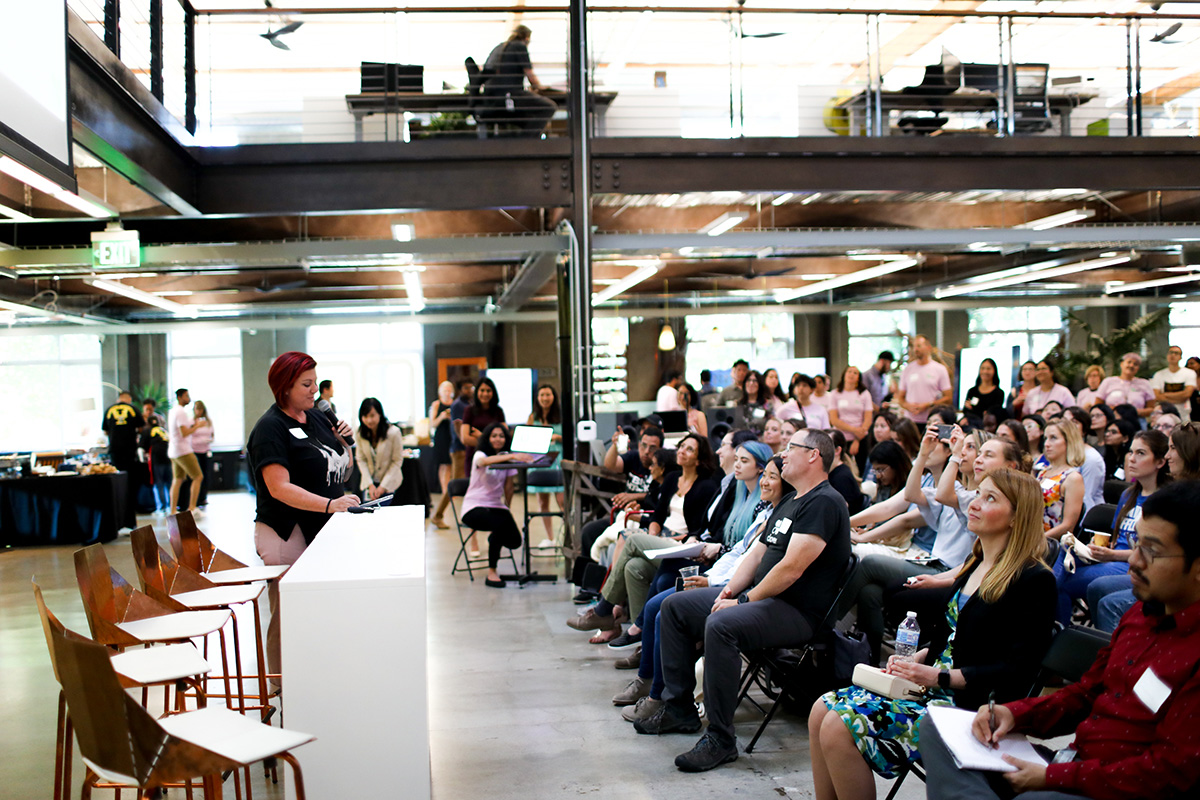
Head of People Jennifer Oswald welcomes the sold-out crowd at Clover Girl Geek Dinner. Erica Kawamoto Hsu / Girl Geek X
Jennifer Oswald: Hi, everyone, I’m going to try and navigate a lot of different technology while I’m up here. I’m Jen Oswald, and it’s my pleasure to have you all here to kick off our collaboration with Girl Geek X. This is an event on unconscious bias. I’d like to thank you for attending and I can’t wait to hear what takeaways you have from this event. We know that events like these can impact your lives and have a lasting effect on not only your professional life, but also your personal life.
Jennifer Oswald: Our agenda this evening is as follows. First, me, I’m your introduction and welcome. Then we’re going to look at what we do. We’re proud to showcase a bit on what we do here at Clover. You’ll also be meeting our CEO, who will talk you through that. We’ll have lightning talks as well that will show you a little bit more about our product. Next we’ll be featuring our panel discussion on unconscious bias, and then lastly, we want to make sure you still have time to network, and don’t forget your swag.
Jennifer Oswald: Maybe a silly question, but who is confused by me being up here today introducing unconscious bias? You don’t have to raise your hand, you can just think it if you want. Would it surprise you to know that I grew up identifying as two races, Native American and Caucasian? That was before a DNA test. More to come about that later. When biases come to mind, what did you think when you saw my picture before this event? What did you think when I came up here? That is unconscious bias, it’s bias happening in our brains making incredibly quick judgments and assessments of people and situations without us even realizing.
Jennifer Oswald: They can be influenced by our background, our cultural environment and personal experiences, and resolving feelings and attitudes towards others based on race, ethnicity, age, appearance, accent, et cetera. Also termed as implicit social cognition, this includes both favorable and unfavorable responses and assessments activated without an individual’s awareness, or intentional control.
Jennifer Oswald: How did I get here? That’s little baby Jen and that’s my mom. As you can probably see, she was a very, very young mom. She had me at a young age, she worked the night shift and we lived in the projects aka, subsidized housing. That’s a picture of Iowa City, Iowa. We were on food stamps and we struggled to get by. Even at a young age, I knew what it was like to struggle. Then the classic story, mom meets dad, he adopted me at about age six and life was a little more middle class and a little more in the middle of nowhere.
Jennifer Oswald: I grew up in Palmer, Iowa. This is a picture of our downtown. That is the one gas station, right next to it was the grocery store/where everybody went to have coffee in the morning. I was in a town of 256 people, so how diverse do you think that was? Here I am, I’m the only adopted person in the whole town, mixed, left-handed, and female. How many do you think were college grads? I was supposed to get married, raise three to five kids, maybe have a job after I took care of the kids and at the very least, I should be a great cook and make sure that everyone is well fed. So, what do I have? I have a college degree, an almost masters, zero kids except for my fur babies, zero husband, and I just moved from the Silicon Hills, Austin, Texas, to Silicon Valley.
Jennifer Oswald: My unconscious biases tell me that men should have a career, women should stay home and raise a family. Being adopted means you don’t really have a family like others. Men should make the money, women should tend to the family. Once poor, always poor. You should write with your right hand because everyone else does. Men are better at math and science. Yet here we are at a tech company with a panel of amazing females to tell you about their experiences and biases they’ve encountered, and how they proved many of my own unconscious biases wrong.
Jennifer Oswald: We all have unconscious biases. It comes from our culture, it comes from our families, it comes from our family’s families, yet once recognized, we can overcome them. So here I am, a place I shouldn’t even tried to get to, kicking off an event for an amazing company that says FU bias, and we’re working to overcome and support diversity and inclusion. No matter what the package looks like on the outside. We hire the book, not the cover. On that note, I want to introduce the person responsible for creating such a great place for like-minded people to come together. In fact, in 2019 he was nominated for two awards, Best CEO for Women, and Best CEO for Diversity, and we just think he’s the best. I’d like to welcome John Beatty, our Clover CEO.
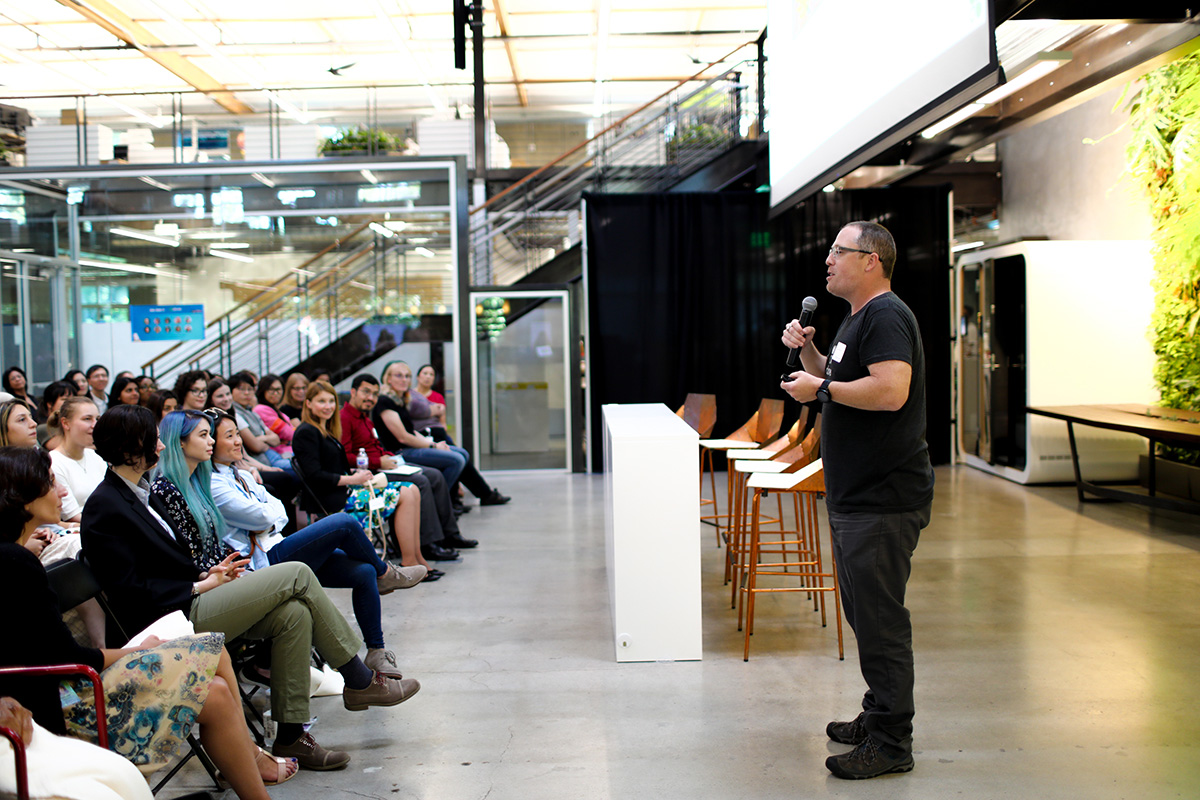
CEO John Beatty talks about the change that needs to happen in the world at Clover Girl Geek Dinner. Erica Kawamoto Hsu / Girl Geek X
John Beatty: Thanks, Jen. Welcome everyone to Girl Geek X. You know, I get the opportunity, of course I have to promote my own company. There could be no better promotion of Clover than what you just saw with Jen. She’s our new Head of People, and I think she’s absolutely amazing. Really excited to grow our people function here, so thank you very much, Jen.
John Beatty: First I’m going to just tell you a little bit about what we do here. You’ve probably encountered a device that looks very much like this. We are all across America, we’re also in a number of other countries. Thank you. We build absolutely beautiful cloud based point of sale hardware and software and systems. I’ll tell you the reason why we did this, this is going back, we started Clover about eight years ago. What we saw was a bunch of really ugly, really insecure, really closed systems and there was … on the counter at all these restaurants and retailers and services companies. We were trying to bring some innovations into that market and just ran into a bunch of brick walls.
John Beatty: We started talking to business owners and we realized they absolutely hate their systems, they keep having data breaches, the systems really don’t help them run or grow their businesses very efficiently. We thought that was a very interesting problem to solve. We love small businesses and recognize that a lot of small business owners are just trying to do what they love and they need technology to support them. We have many, many … We’ve manufactured over 1 million devices. The US is our largest market, so you have almost certainly encountered one of our devices.
John Beatty: On the consumer side, we have a very engaging consumer experience. First, the consumer journey starts off typically signing up for a loyalty program. You’ve probably seen one of these as well, you just type in your phone number and then we extend that consumer journey–if we could could go to the next slide, all all the way to the mobile phone. We have a very highly rated mobile app as well. It starts off with loyalty, but of course we also have Bluetooth beacon enabled payments. You can walk into a store, you don’t even take it out of your pocket. They know you’re there, they know what you like. You don’t even have to pay. You just say, “I’d like to pay with Clover,” and you walk out. It’s a very magical experience.
John Beatty: On the other side of the counter, they have a Clover device. Your profile picture will show up there, a little bit about your history, how often you’ve been there and what you like. We’re really building an absolutely fantastic end-to-end experience both for the merchant and the consumer.
John Beatty: Now, we also have an app marketplace that helps businesses run and grow their businesses. We take a lot of the … We make a lot of the mundane, very simple. We have a number of partners in categories like payroll. If you want to make your life very easy as a business owner and get all the employee information and get it into your payroll system, we make that very seamless. We work with best-of-breed other companies and we partner with many of them here in the market.
John Beatty: That is enough about Clover. I know I get a few minutes here of corporate shilling, so thanks for bearing with me. First, I want to talk a little bit about, what does it take to win one of these awards? Let me just tell you, when I first saw the news that I’d won these awards, I had two thoughts. The first is, “Well, that’s really cool. I’m very proud of that.” Then the second is like, “How did that happen?” To be completely honest. So first, to talk just a little bit about the pride that I felt. These middle meant a lot to me, both personally and professionally.
John Beatty: Personally, I have a–I have a wife. My wife is right here in the front row. She’s a scientist who’s now in business development. Very accomplished in her field. I also have a six year old daughter, and I also have two boys, four and two. I’m not going to go into any details. Let’s say, my wife has run into some professional situations that are absolutely outrageously unacceptable. I think the world has made a tremendous amount of progress in being more fair and just over the last 50 years, but there’s a lot of work left to do. And with all of my kids, both my girl and my boys, I’m very … When they grow up and they see that I’ve done things like this, I’m very proud that I can say I helped make the world more fair and just. That means a lot to me personally.
John Beatty: I asked the question, what does it take to win one of those awards? Honestly the answer is, not enough. The bar is actually just too low. I will say we try very hard at Clover on diversity and inclusion, but we are a small company. Just a short number of years ago, we were a very small startup just trying to survive. Most of your thoughts on, how do I not die, not, how do I create the world’s best culture?
John Beatty: Now that we’ve grown up a little bit, now we are very focused on building out those programs. We’re out of the almost dying category and into the very successful category. I’m very proud that we’re doing events like this tonight. But, this is very recent for us to actually build these institutions. We have a Women in Tech Group here at Clover, and that’s a very grassroots effort. It’s building and it’s building, and we’re really getting a lot of great programs here.
John Beatty: I could win this award with honestly not doing that much proactively, just avoiding the unforced errors and making sure we squash any bad behavior that we see, it means the bar’s probably too low. That’s the Clover story. If you could just jump of course, I’m going to show one more time. We have recruiters standing by. Alicia, John, they are waving at you right there. They would love to talk to you and of course, Clover.com/careers.
John Beatty: I’m going to introduce Rachel. Rachel, why don’t you come on up? Rachel is on our software engineering team on our Payment Terminal API and she will tell you a little bit more about what she does in a lightning talk.

Software Engineer Rachel Antion gives a talk on semi-integrations and how it fits into the business at Clover Girl Geek Dinner. Erica Kawamoto Hsu / Girl Geek X
Rachel Antion: Hi, my name is Rachel Antion and I’m a software engineer here at Clover on the semi-integrations team, which is our internal name for the Payment Terminal API so if I use them interchangeably, that’s why. Overall, we make about 2 billion card transactions every year, which amounts to be about $100 billion on over 1 million devices sold in seven countries, and we are approaching 5% of Visa and MasterCard volume worldwide, which I think is pretty impressive considering we’re only in seven countries right now. Of that, 2.5% of those transactions are processed via the Payment Terminal API, which might not sound like a lot until you think that it’s about $2.5 billion, and it’s growing every year.
Rachel Antion: Can you click it? Some of those transactions are coming from integrators that you probably recognize like Amazon, the Las Vegas Convention Center, the stadiums of the Philadelphia Eagles, the Seattle Seahawks, and the New York Mets. All of these integrators created their own solution customized to their individual business needs. Here is a specific example of a solution built with the Payments Terminal API. This is a beautiful point of sale created by Hy-Vee that’s totally customized to their individual business needs. But in order to appreciate just how awesome this is, you might need to know a little bit more about the Payment Terminal API, where it came from, and how it works.
Rachel Antion: People have been taking payments for pretty much as long as people have been around and as we progress, the way that we take payments also has to progress. When credit cards were first introduced, there was not a lot of security, but as the age of the internet progressed, so did the need for that security. Older point of sales basically consisted of some kind of UI attached to a magstripe reader that would send unencrypted data to the point of sale, which might make all of you uncomfortable because it led to things like the data breaches that started in 2010.
Rachel Antion: Clover knew that there had to be a better way to take secured payments without making companies throw away all the hard work they put into developing their point of sale systems. That solution was the Payments Terminal API, which allows you to use a Clover device as an external payment device. Your point of sale gets a Clover payments API, and Clover provides the PCI compliance. Basically, you make the point of sale and Clover takes care of the rest. All the point of sale needs to worry about is creating the order and making sure the right amount gets sent to the Clover device.
Rachel Antion: We have two different flavors, if you will, of the Payments Terminal API. We have Native or takeover that lets you create your own app that runs directly on the Clover device, and we have Remote that lets you run it on pretty much any device. We have SDKs and Android, iOS, Windows, and JavaScript so the possibilities are pretty endless. That beautiful point of sale I showed you earlier is actually an example of a takeover model. You can see it here running on our Clover station.
Rachel Antion: Who exactly is the Payment Terminal API for? Its for someone who has an existing point of sale. Maybe everybody’s already trained, they know how to use it and it works just fine, but they want to use a Clover device to take payments because it’s faster. It’s someone with a specific business case, a hotel, a restaurant, a mom and pop shop. They’re all going to have different payment needs and it makes sense that they might want different apps. It’s for someone who wants more control over the process. It’s possible that you need different payment flows, even within the same business.
Rachel Antion: For example, at salon, how you pay for a service and just a product might be different. You probably don’t need a tip and signature if you’re just buying a bottle of shampoo, but you do when you’re buying your snazzy new haircut. Or, it’s someone who just wants to build their own app. If you think this might be you or you have any other questions, I’d be happy to chat with you after. I’m going to turn this over to Wako who’s going to talk to you about empathy here at Clover.
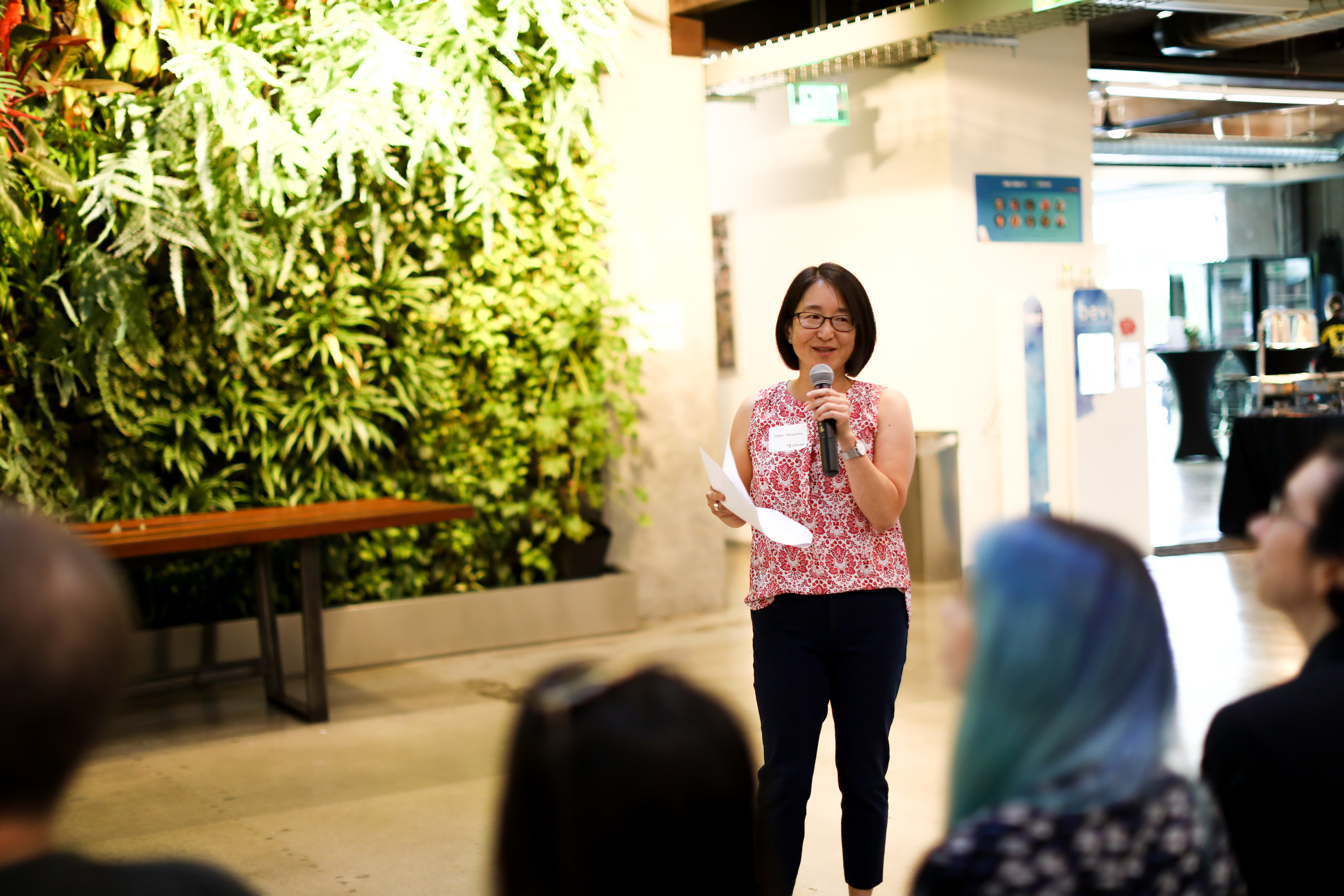
User Research Lead Wako Takayama gives a talk on fostering customer empathy at Clover Girl Geek Dinner. Erica Kawamoto Hsu / Girl Geek X
Wako Takayama: Hi everyone, my name is Wako Takayama and I lead the user research group here at Clover. John and Rachel introduced you to our product and the technology, so I am going to focus on the people who use our products and services here. Business owners like Thomas, who runs Poorboy’s Cajun Kitchen, which is just a few miles from here. You may have been there, very good food. And, Olivia from Theory Salon, which is in Woodstock, Georgia.
Wako Takayama: As with a lot of companies, we at Clover, we face the challenge that we build products for people who do jobs that we don’t do. These small business owners like Thomas and Olivia, they have a lot of things on their plate, they’re juggling a lot of things. They make all the decisions about their business, where are they going to open their store? What’s their product? What’s the price they’re going to sell things at? They have to hire, they have to fire.
Wako Takayama: Here we have one of our local businessmen. He needs to set up his own Clover system. He takes orders, he delivers food, he’s checking inventory, and then he has to call the vendor to make sure that he has stuff to sell, so a lot of stuff. This is just what we call front of house. Then there’s back of house. It’s all the office management stuff, lots of stuff that these business owners have to do.
Wako Takayama: For us to do our jobs as designers, engineers, marketers, we really need to know a lot about what these people do. We need to know that because that’s what we base our work on, the building, the designing that we do. The user research team, my colleagues and I, we help by doing formal research studies and, we work on fostering company empathy across the whole company.
Wako Takayama: But first, what is empathy? I’m going to read this to you, the ability to step into the shoes of another person aiming to understand their feelings and perspectives, and to use that understanding to guide our actions. The key here is that empathy allows us to get beyond our biases. One way we’re doing this, I’ll tell you quickly, is that we foster empathy at Clover starting on day one at the company. If you were to join Clover, you’d join the Merchant Empathy Program. This is a way to step into the shoes of a new Clover merchant. During the first week, you would work with your fellow new hires to dream up a business, set up a Clover system. You can see one of our designers really went over the top and he created this beautiful menu, and then take orders and payments.
Wako Takayama: I’m a researcher, so of course I send out surveys after things. I found out that this program has had a really great impact. One engineer said, “There were a couple of issues I worked on as I joined the team and due to my knowledge of the system from the session I was able to figure out a couple of issues easily.” That’s fantastic, right? Another engineer said, “It has helped me feel more connected to the customer and the company, and has helped me feel a little closer to the customer.” That’s really the key. We want to all feel closer to the customer, that we understand them, that we are serving them.
Wako Takayama: Imagine what stepping into the shoes of the user of your product or service could look like. How can you foster empathy for the person who’s using the product that you’re working so hard to build? If you’d like to brainstorm with … If you’d like me to brainstorm with you about some ideas, I’d be happy to do that, just come find me afterward. And, if you haven’t already had a chance to touch and step into the shoes of our Clover merchants, you can do that over there to get your schwag, and also just to play around with our product. Thank you.
Wako Takayama: Now I’d like to introduce Kejun Xu.
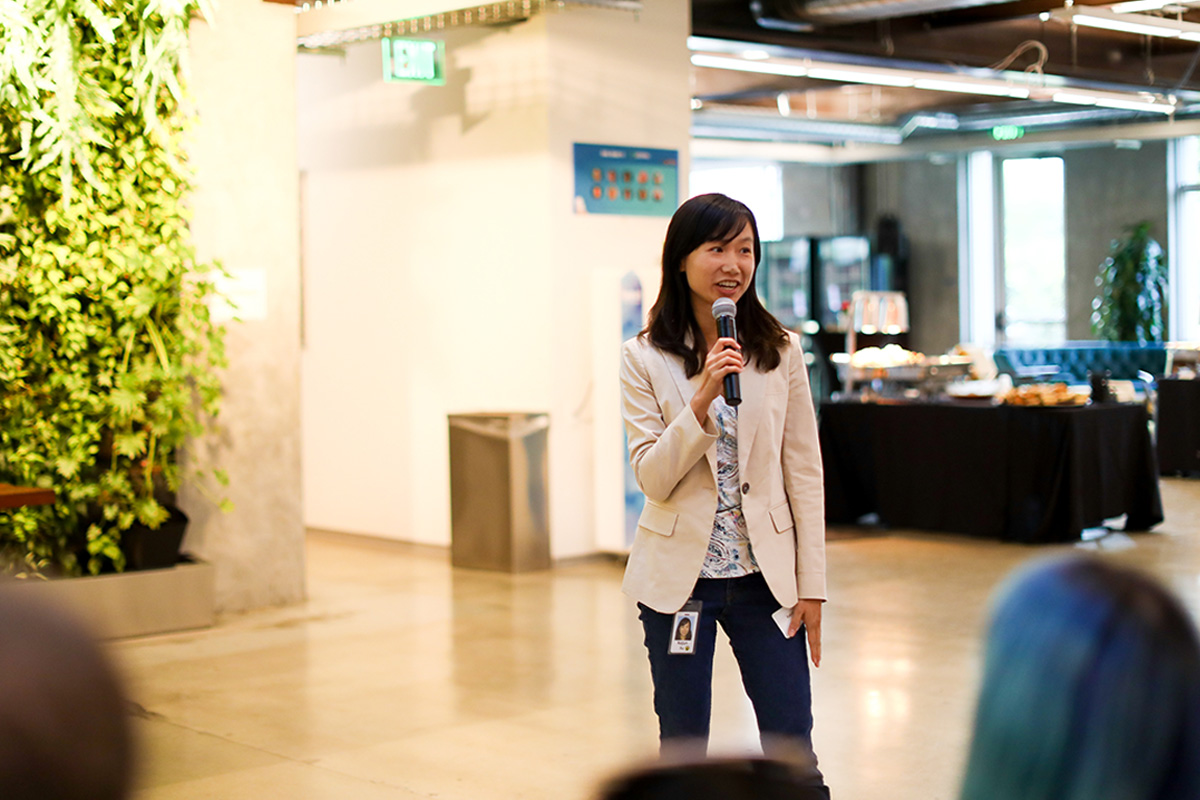
Product Design Manager Kejun Xu gives a talk on thinking like a designer at Clover Girl Geek Dinner. Erica Kawamoto Hsu / Girl Geek X
Kejun Xu: Thank you, Wako. Let me see if I can make this magical work somehow. Let me give it a try. Nope, doesn’t like me. All right, hi, everyone. My name is Kejun Xu. I’m a Product Design Manager here in Clover. I want to talk about how we design at Clover today, and you don’t have to be a designer to think design. You may ask, well … Next please. What is design thinking?
Kejun Xu: Actually, first of all, let me start with some numbers. It’s quite interesting. A few years ago, a team of researchers looked at how design impacted the organizations across S&P 500 companies. What they found was that of the top 20 companies, including Apple and Coca-Cola, who made it to the list, who are considered as design-centric, their stocks performed 211% over S&P 500 Index. This is compelling data.
Kejun Xu: You may ask, well, what is design thinking? Fortunately, we didn’t invent the term. You can search tons of information and technology out there. But basically, it’s a framework to foster innovation and collaboration. It starts from empathizing with your target audiences all the way to testing and evaluation. Wako talked a lot about merchant empathy. A lot of us joined at Clover without any knowledge about restaurant or SMBs, including myself, so we would go out for day trips and we’d go talk to the restaurant owners and managers. We’ll learn about their lives and their challenges. We also would go and shadow them and see how they would ring up an order on the Clover station, or how they would take payments …
Kejun Xu: Oh, it works? Can I have it? I’ll try it. This was a trip that my product manager, my researcher, and I went out and shadowed the merchants and see how they would take payments at the table. Still doesn’t like me. Sometimes when things are disconnected, we’ll go out and talk to them and see how much the pain point was. There are also other insights and data that we just couldn’t get by sitting here at our cubicles or in the office. By looking at this sheet of paper, the restaurant owner would know exactly what’s going on with this restaurant. It’s actually a pizza restaurant out there in Sunnyvale called Tasty Pizza.
Kejun Xu: That owner would know exactly what their customers ordered, where’s the order coming from, is Uber Eats or is it from DoorDash, was it paid or not? With all that forward data … I’m going to just do it myself, we’ll come back to the office and sit down as a team and really scope the problem. I’m really proud to say that every sticky note out there that you see our team put up, it connects to a real world problem. Then we’ll also sit down with the team to sketch the ideas all together. Like I said, you don’t have to be a designer in order to design. One of the sketches that got the most [inaudible] vote on is actually from one of our engineers.
Kejun Xu: This is where the design team will come into play. We would turn the ideas and all the concepts and sketches into clickable prototypes. We would then present the prototypes and we’ll do usability testing around it. Some of the testing that we’ve done are in house. We will invite merchants to our office and give them a tour and in the meantime, help us usability test or prototype. Sometimes we’ll go back to the restaurant, and we’ll go back and talk to them and test the prototype in their natural environment. A lot of times, we also do our usability testing remotely in remote sessions through GoToMeeting or Google Meet because we know that we live in this place called a bubble of Silicon Valley.
Kejun Xu: Well, design apparently doesn’t stop here. We shepherd through the entire development process. What this really enables us is that design get to sit at the forefront of the conversation and everyone get to sit at the forefront of the conversation. It allows product managers, engineers, marketers, researchers, designers, and everyone on the team and cross functionally align our goals, and that’s a recipe for high performing teams. You have to add a very special flavor to how we make design here at Clover, and it’s really that we make this a fun process to work on and if you haven’t noticed, we have an open bar at that corner. What’s more fun than sipping on a glass of Mimosa, then sketching your next product idea? Thank you.
Kejun Xu: Next up, I want to introduce our lovely panel for tonight with a topic of navigating conscious and unconscious bias and I want to introduce our moderator for tonight, our engineering director Bao Chau Nguyen. Welcome.

Director of Engineering Bao Chau Nguyen introduces the panel of Clover leaders at Clover Girl Geek Dinner. Erica Kawamoto Hsu / Girl Geek X
Bao Chau Nguyen: Good evening everyone. My name is Bao Chau Nguyen and I lead several engineering teams here at Clover, the Clover mobile apps point of sale and the app market web apps. The topic of conscious and unconscious bias had never been more prevalent than right now. From the current political landscape to the social movements, we are immersed in this topic, sometimes not by choice. We’ve come a long way in identifying biases, but we’re not close to eliminating or overcoming them consistently.
Bao Chau Nguyen: I want to show you a research study that I ran across on this topic. Imagine a fake company having a 1% performance bias towards gender. The impact of this 1%, they’re starting out with 50:50 men-women distribution across all career levels and this company rates women from one to 100, and men from one to 101. Over 20 simulations, the company is now skewed with fewer women at top levels. Now imagine running more simulations, the number is going to be a bigger gap.
Bao Chau Nguyen: We know this is a fake company, but we also know 1% bias is not realistic. Having been a young immigrant to America, I faced many biases over the years in all aspects, from classrooms, to just vacationing outside of California, to workplaces. I wanted to make sure that tonight’s panel will have a heart to heart conversation with you and whether you have experienced a bias or not, you can walk away with more awareness and some learnings on how we can become allies to one another. You want to speak up when you see these microaggressions and stand up for each other, because together we are stronger.
Bao Chau Nguyen: With that, I’d like to introduce our panelists, Mary Uslander, Ellen Linardi, Rachel Ramsay, and Meghana Randad. Let’s start ladies, welcome. Would you talk a little bit about your role here and, what was your initial reaction when you were invited on this talk?
Mary Uslander: Yes. Hi, everyone. My name is Mary Uslander. I’m actually from our New York office and I lead commercialization, client experience and work closely with the Clover team. I’m actually part of Fiserv, the parent company. For me, the topic was really around inclusivity and how you use it to an advantage, to really build diverse teams for success. I’m really excited to talk more about that.
Ellen Linardi: Hi, Ellen Linardi. I head the product team here at Clover. When Bao Chau approached me about being in the panel, it was interesting. I think I’ve always had a very interesting relationship with bias, both having seen a lot of it and we’ll chat more about that a little bit later, but also how it made me feel, then how I reacted to it and how I find what you do with the bias that is ultimately always going to be there leads a lot to the outcome. Hopefully we get to chat a little bit about that and we find it valuable. Excited to be here.
Rachel Ramsay: Hi, my name is Rachel Ramsay. I’m a developer advocate here at Clover. I also work very closely with our data analytics team. When you invited me to be on this panel, I was excited because up until I was 25, I thought I was going to be a sociologist, so I feel that I bring a more structural perspective than a lot of people have.
Meghana Randad: Hi, I’m Meghana Randad and I am a software engineer on the payments team here. When I was first invited to talk about this topic by Bao Chau, I was really excited and very happy because this is one of the topics which is very close to my heart. I have always been an advocate for women against inequality, against bias, and a lot of things we are going to talk here. Just coming from a very different background of being an immigrant and a woman and just an engineer, I face it every day, so thank you for having me. Honored to be here.
Bao Chau Nguyen: Great. Where can I start? This is a question for all of you. Would you share a time or a setting where you experienced a gender or an affiliation bias? How did that make you feel and how did you overcome that? We can start with you.
Meghana Randad: When I was growing up, the part of the world that I grew up in, in India, it was a norm and it was also common that women should get a college degree to find a better husband, not to find a better job, and then run the home. People often ask me, “Why do you want to work so hard? Why do you want to have a career when all you can do is support your husband, be home so he can really focus on his work?” A very fundamental assumption that women cannot, are not really so capable to work outside home and can’t have a career was very upsetting.
Meghana Randad: I had to overcome that many times in my life. To me, the key really is to believe in yourself. Sometimes you have to do what you have to do. If you want to get something, if you have a goal that you need to achieve, you have to be persistent and sometimes it could mean challenging the status quo. I was the first woman engineer in my family, and the first one to travel abroad, come to a new country all alone to pursue my career. It’s very easy when you have a defined path, but it’s really hard when you know where you want to be, but nobody to guide you or mentor you, so really all you can do is to believe in yourself.
Bao Chau Nguyen: I really can relate to that. My parents came here and had to start their career all over. They were teachers and then they came here, they had to go to back to school for a different degree and different occupations, so I applaud you, Meghana. Rachel?
Rachel Ramsay: Yeah. I’m an older millennial. I say that because I feel like a lot of women my age, when we were in middle school and when we were in high school, we were learning HTML, we were learning CSS, we were learning JavaScript because we were making our own websites back in the web 1.0 days, yet of all my friends and I who did that, no one was like, “That’s front end web design. You can make a lot of money doing that.” No one else was like, “There are other programming languages that you might enjoy.”
Rachel Ramsay: Out of my friends, none of us ended up pursuing it in college or as a career. I sort of backed into tech by going to a boot camp. But even once you get your foot in the door, once you’re the diversity in D&I, it can be hard to stay technical. Because people say, “You have such great people skills, maybe you want to go into management,” or “You’re a great communicator, have you thought about technical writing?” So, it can be very hard to say, “My North Star is,” whatever it is for you. I want to be a principal engineer and stay on that, stay in technical working with your manager to say, “I want to get the promotion, what do I have to do? Where are the opportunities?” You really do have to run your own career sometimes.
Ellen Linardi: I think from my perspective, a lot of the stuff that Meghana and Rachel both talked about are certainly true. I grew up in Indonesia, in a town not very different than what Jen showed. We had seven, about 7-Eleven looking thing and if I get in trouble at school, by the time I get home my mom knows about it. I don’t know how, but it’s a very small town. It was similar expectation with Meghana was saying, grow up, get married, make sure the man takes care of you.
Ellen Linardi: While I have a lot of stories I think on on biases that I’ve seen, what I wanted to share was probably an experience I had early in my career when I was in Intuit. I started out as an engineer there and loved coding. I was a keyboard hogger. When someone’s coding or trying to solve a problem too long, I get anxious and it’s like, “Let me try, let me try.” I knew I was very comfortable, I enjoyed that a lot.
Ellen Linardi: The other thing that was quite interesting, and I think this is something a lot of females can identify with, I was a good communicator, I like to organize, I pay a lot of attention on how everybody else feels so I kind of try to make it a team decision, make sure everyone’s included. So, one day one of my colleague came to me and told me, it was like, “You know, you’re an okay developer, but it’s all because you’re a good talker.”
Ellen Linardi: It was meant as a dig and I think the thing that I really wanted to share here is, at that point you have a decision. You could take it as a dig, or you could take it as a compliment. I chose to take it as a compliment at the time and I said, “Thank you very much. It is a skill so if you ever need help, I’ll be happy to help you in that area.” The thing I wanted to share there is that we are all going to run into bias, especially unconscious bias, and it’s called unconscious for that reason.
Ellen Linardi: It is going to be there, and I think we’re going to have a lot of opportunity to decide what you do with it. You either let it drive you and change the decision you have, to the point of focusing on where you want to go. Take it how you want it, and the bias folks have are not always bad. If someone say, “You’re Asian, you must be good in math,” maybe you are, you’re like, “Yes I am, thank you.” I just think that one of the way that I’ve approached some of the biases is not always negative, it’s simply a perception people have had going to that interaction with you and their experience of how they thought you should be.
Bao Chau Nguyen: Did you remember some of the responses after your-
Ellen Linardi: I never heard that line again after and I could tell you, certainly being a good communicator has gotten me to where I am. It hasn’t held me back, so I suggest that if you guys have felt biases or people saying things that you know, you’re female, you must be good in this, just say, “Thank you, that’s awesome. I’m good in that and this.”
Mary Uslander: I wanted to share more … First of all, having conversations like this is critically important and I’m just thrilled that everybody’s here. I think this is a conversation that we have to keep having. From my perspective, what I try to do is constantly make people aware that maybe they’re thinking about things a certain way, because of some unconscious bias. Whether it’s working with my male colleagues if we’re in the middle of merging with a new company, and people are making their decisions or judgments about individuals. It’s always interesting about how they talk about the women versus how they talk about the men.
Mary Uslander: When they’re senior women who are very strong, and very powerful, and very opinionated, and very inquisitive and are asking hard questions, there’s always a different value judgment on that individual versus if John was sitting down and really asked all those hard questions, “Why did you think about it this way? Why are you doing that?” That’s part of what you do. It’s really important to–in a right way, but just say, did you think about … Are you judging this person differently because they are a woman?
Mary Uslander: It’s really being aware of that and personally, I try very hard within my own team and I can see it as well. I have two young analysts, there’s a male and a female and they’re both incredibly smart and very talented. She works her butt off and puts her head down quietly and just gets things done. The young gentleman, he’s great too but he’s constantly putting time on the calendar and just showing me what he’s done. Not in a bad way, but I encourage her to do the same. I think it’s just being aware each other as well, and really trying to keep the conversation going, and how do you use it in a positive way?
Bao Chau Nguyen: Thank you Mary, just hold on to that. I wanted to ask you a follow up question. Having so much experience and leading big teams, in your … What have you noticed in your observations on diversity and how it impacts business outcomes?
Mary Uslander: I would say it’s really important to have different people on your team that do different things, but also come with a different perspective. You want someone like Kejun who’d have a design perspective, somebody who’s going to have a different perspective on, let’s say the merchant or empathy, analytical skills, detail oriented, big picture, creative. But, it’s really the power of that diversity of thought that really helps you get better outcomes.
Mary Uslander: What you also want to have is the commonality of you want people to have similar core values, to be ethical, to be honest, to work hard, to be smart and talented, so you really want to … You want to build your team based on skills and based on talent, but you want that talent to have a very diverse perspective. That really helps you achieve much better goals, because people are challenging you in different ways and arriving in problem solving in unique ways to get a much better result.
Bao Chau Nguyen: Thank you, I love that. Ellen, going back to what you were saying, coming from Indonesia and having that cultural bias of certain things that women have to do, and I know you have two daughters. Are they here?
Ellen Linardi: Wondering around here somewhere.
Bao Chau Nguyen: They’re just being great kids. I wanted to ask you, knowing that cultural bias exists and having daughters, does that impact how you raise them?
Ellen Linardi: I think what actually impact how I raise my kids has a lot to do with how I was raised actually. The interesting thing is while I grew up in a very traditional Asian town, I would say my parents were probably pretty progressive, not very conventional. Partly, my sister and I always … I have one sibling, so we are two sisters as well. My dad never had a son. I think he poured it all into us. He basically told us, “Whatever you want to do, pursue it. If you don’t like something, question it.”
Ellen Linardi: I think it drove my mother crazy somehow because when she told us, “Because I told you so,” we were like, “That’s not a reason.” We were brought up to really question the assumption and I think that was unusual. I think that was unusual in my town, that might be unusual for some of you, but I think questioning the bias and assumption and take it as an opinion at face value, and then deciding for yourself. It’s really a matter of choice. Running a home is not a bad choice.
Ellen Linardi: I think that’s one of the tricky thing, is that a lot of times you could see, your mom’s giving you the value she knew, and she knew how to run a home. That’s the life she could envision for you. To be able to understand the intent behind it and realize the impact that it has but not take it as face value, and be able to insert your own thoughts and your own desire to it, I think that is what I was taught.
Ellen Linardi: For me, I told my parents all the time I grew up to become who I am because of what I think the upbringing that I had and I try to do the same with my kids. I hope to be half as good of a parent as my parents was, but it’s the same thing and I think part of it is that it’s slightly uncomfortable. You tell them to question things, I tell them, “Because mommy told you so,” and before I say it I’m like, “They’re going to tell me it’s not a reason.” But, it’s ensuring that you understand why you’re doing things, and it is for a reason that you accept and you’re aligned with.
Ellen Linardi: It’s not because someone told you, it’s not because you’re scared, it’s not because society expect you to do so, it’s because you want to. I think having that as a compass is what I try to instill in my kids. That’s helped me, hopefully it helps others as well.
Bao Chau Nguyen: Certainly I grew up and my mom expected me to help her in the kitchen, and I always ran off and go do something else. Having two kids, a boy and a girl, I try to be as equal, whether by chores, it’s like, “Both of you clean up your rooms, both of you fold away your own laundry, both of you wash your own dishes.” So, not guiding them towards anything that is specific to their gender that they have to do. Just growing up here and seeing that world, it really helped me raise my kids to.
Ellen Linardi: It was actually what the interesting thing when I first came to the States, and I came after high school, actually. I always thought I was different when I was back home, but my parents kept telling me it was okay to be different. I was also a sick kid, so there was a lot of reason to be different. But when I came here, I realized I was different, but everyone felt a lot more different and being different was okay. I’m like, “That’s awesome, I’m never going back.” Here I am like 20 years later.
Bao Chau Nguyen: Now Rachel, being a lesbian you have twice the potential for bias from gender to sexual orientation. What changes or suggestions would you like to see in an organization to combat these biases?
Rachel Ramsay: Well, it’s easier to be a lesbian in the Bay Area than it was in North Carolina. I do want to call out the ways in which I am privileged, which allowed me to come here. I’m a white woman, I come from an upper middle class background, I’m a cis woman. When I decided like, “The Bay Area is really expensive, I need to get one of those tech jobs,” I was able to say, “I can get a loan to go to the boot camp, but dad, I’m going to be out of work for three months. Can you give me a loan from bank of dad?” Which he did. The question is…
Bao Chau Nguyen: Thank your dad for us.
Rachel Ramsay: Yes, I’ll tell him that. So, how do we create a world where everyone is safe is a really big question, bigger than the question you asked me, so I will limit myself. But, I’m really excited by what Jen is planning, our new head of people ops to include more of a diversity and inclusion training as part of our onboarding, similar to the program that we established for merchant empathy. But it’s not just about new hires, it’s across the company. Every year I get to sit through some trainings that are like, don’t bribe people, don’t sexually harass people.
Rachel Ramsay: I would love to also have a mandatory training like, don’t misgender your colleagues. It’s not just about education, it’s also the policies and the material support that we can provide to our colleagues. Whether that’s little simple steps like normalizing doing your pronouns when you get introduced, whether that’s having a gender neutral bathroom that’s just like a place for non-binary folks. And of course, making trans healthcare accessible. It has to be part of your health coverage and you also have to pair it with a supportive medical leave policy.
Bao Chau Nguyen: Hear that, Jen? She’s working on it. Meghana, you have two little kids. Describe to me balancing work and life, and not having the choices to stay late to work on a project or going out to a team dinner for team bonding. How did that impact you, or how do you feel like it impact you or your career?
Meghana Randad: Most of us feel that 24 hours in the day is not enough. I feel when you have young kids, even 48 hours are not enough. It’s just a lot of physically, emotionally sleepless nights, and being present at work and to be productive at what you do. When my team goes out for happy hours, and happy hours I feel are staying, working late together as a team are ways to bond, are ways to network. Sometimes you talk about things which are not related to work. You talk about your passions, we are in this space together and we are all motivated towards similar goals. You form a sense of community, you feel you belong here.
Meghana Randad: I felt when that happens, the team that I worked in was much more productive. Then being a young mom, being a young mom is incredibly hard. It’s very hard to create that harmonious balance between work and family. I do have to put definitely much more effort for working or even sometimes to just bond with my colleagues. For example, there has been times I had a four year old boy, a five month old baby, I’m on call for production, there’s a fire and I have to deal with it, I have to debug the issue.
Meghana Randad: My sick kid is now refusing to eat, some I’m sitting at the table, trying to get him to eat, a laptop in front of me Slacking and trying to look at all the graphs and debugging our code to figure out what’s wrong, to make sure we don’t fall apart as Clover. At the same time, holding my five month old in another hand and breastfeeding her. She was happy sucking away.
Bao Chau Nguyen: Multitasking to the next level.
Meghana Randad: And all moms have it. It’s not just me. But, I feel very grateful. I have an incredible partner who supports me when you have to stay late at work. For example, today he’s babysitting. I feel equally happy to work for a company, which supports its employees through various life phases. It’s just not flexible hours or maternity perks, it’s more than that. It’s a thinking that’s ingrained in culture here at Clover.
Meghana Randad: In my first week actually, we had happy hour on a Thursday and John Beatty, our CEO, he came up to me and he told me, “Hey, I know you’ve been a new mom and I know how hard it can be because I’m a new parent myself. I understand it’s hard, and I’m here to support you, so let me know if you need anything.” That itself is, that comes back to me every time I feel I’m struggling, and it’s very reassuring to have that support, just not at home, but also at work. I feel happy and cared for.
Bao Chau Nguyen: Wow, that’s a great story. Thank you, John. One last question before we open up to Q&A for everyone. How would you challenge stereotypes, provide some advice to your audience and promote sensitivity and inclusion?
Meghana Randad: As Jen said, we all have unconscious bias. We have amazing unconscious mind, which helps us navigate through a lot of decisions that we make every day. But unfortunately, this unconscious bias that we have against people could lead to make some wrong assumptions about people. Every time I make assumptions about someone, I try to ask myself, why? Why have I made that … Why do I think that way? Do I have enough data to support that? Has that person, does he have skills to do what he needs to do or she needs to do?
Meghana Randad: For me to challenge stereotypes, the keys to keep asking yourself and be really mindful, and be conscious about your biases. Once you’re aware, I think that’s the very first step towards tackling those and to create a very diverse and inclusive environment. It’s very important to have a diverse team, because most people learn from their experiences. To me personally, experiences are most powerful, that’s how I learn.
Meghana Randad: When you create those diverse teams, it can be gender, it can be number of experience, your background, many other things, right? Then people when they interact with each other, their assumptions are challenged a lot of times and they understand perspective of other people. That helps improve the whole culture of inclusion. I feel when you’re creating such diverse teams in workplace, the most important thing is to create a safe place where people can really share their differences and don’t feel that they have to conform to a norm. Really getting that richness in workplace would be the key I guess.
Bao Chau Nguyen: Well said. Rachel?
Rachel Ramsay: I think getting people in the door is not enough, hiring is not enough. You have to be bringing them into an environment that is truly inclusive, truly safe, where they can show up with their whole self and do good work, and come home feeling only the normal amount of exhaustion that you feel. How do you do that? I do think it requires a C suite level buy-in, it requires a buy-in from managers. I’m not a manager, I’m an individual contributor. As an IC, one thing that we can do for each other is we can look out for each other, we can have each other’s backs.
Rachel Ramsay: One time I was in a meeting and whenever I notice like, who gets cut off, who gets assigned the note taking, who gets chosen. You don’t want to white knight for people because it’s their career, but it’s easy to stand up for someone else, probably easier than standing up for yourself. So, there’s always an opportunity to call in a co-worker, to call in a manager.
Ellen Linardi: Let’s see, where do we start here? I think that ultimately, the interesting thing for me, at least from my experience on unconscious bias, is that we all have it. In some ways I say we have unconscious bias to the people that we think have unconscious bias. When certain people approach you in a particular way, you react to them. One of my biggest learning over the years professionally and personally really … I’m a divorced mom as well, so I’ve gone through various life experiences.
Ellen Linardi: Well, in that area is to decouple the impact and intent. The minute you couple the two because of the way someone makes you feel and you start reacting to that personally, emotionally, the conversation really isn’t going to go anywhere. The biggest thing that I really try to do is, I’m like, “Take the impact,” like, “Ouch, that hurt,” and then decouple it and say, “I know you didn’t mean to do that because when you say at the intent it sounds completely bad,” and then even if they mean to so it they’ll be like, “No, no, that was not what I meant to do.”
Ellen Linardi: Everyone take the higher road, but give people a chance to take the higher road. Because, when you tell someone, “I know you’re bad,” they’ll be bad, but when you say, “I know you’re actually good, but what you did was bad,” it gives them a chance to make different choices. I think that’s the first thing, is be aware of how you’re reacting to the unconscious bias. If you react to the unconscious bias by providing your own unconscious bias, it’s like regurgitating the same cycle and it doesn’t really get anywhere.
Ellen Linardi: I think the second thing is when it comes down to bias, the best thing I’ve ever find throughout my career of changing that is by changing the experience that the individual or the people or group in front of you have with whoever you represent. Sometimes I represent an epileptic person, sometimes I represent a divorced mom, sometimes I’m an immigrant, sometimes I’m a female leader, but in whatever context, you have an opportunity to recreate what it meant to interact with who you represent.
Ellen Linardi: When you change that experience, that change perception, that change bias because it is very hard to tell someone, “Change your unconscious bias.” It starts from the experience because that’s where it comes from. I think we all have an opportunity to slowly change that up, both by, I think, providing programs, having structures, and policies and everything that encourages it and making sure people are more aware, but each of us individually also have a chance, I think, on every interaction, to, I think, not continue that bias cycle and try to break it as well.
Bao Chau Nguyen: Yeah, I think we can all be allies. We can always find something that we can ally for each other.
Mary Uslander: A couple of things. One, I try and it’s very hard to do, is listen more. So much with unconscious bias, your brain is going, you’re looking at someone, you’re making a snap judgment. But then if you stop and you actually listen to what they’re saying, it’s overwhelming like, “Oh my God, this person’s amazing and what they’re saying is incredible.” I think for all of us to just stop and really listen, hear, and just try to incorporate that skill into everything you do. That would be one thing I work on every day.
Mary Uslander: I think the other is if you’re either managing people, be aware of always going to the same person. It’s easier said than done because a lot of times you have deadlines, and you need to get things done, and Ellen is the one who can always deliver like that or whomever. But you have to really give other people a chance, and also coach and help them right. Mentoring is another thing we haven’t talked about as much here, but we all know how important mentoring is, and mentoring is everywhere. It’s tonight, right? It’s listening to these amazing women and hearing about John and others, you look around you.
Mary Uslander: Every day, you should look forward and see, what could I take from someone? Whether it’s the person at the front desk or whether it’s the person who’s bringing the coffee, there’s always something to learn. Then if there’s someone who you really admire or respect and you want to spend some time with them, seek them out, ask them if they’d be willing to have a cup of coffee with you. It’s listening, it’s being aware, it’s trying to spread the love around and really help each other out. We as women here have to really continue to help each other and help the men, because sometimes they need a little help and understanding, probably more so than most, but I think it’s our job and responsibility to keep doing and keep advocating.
Bao Chau Nguyen: I know that you are part of many women organizations as well, you’re a big advocate for women. Can you talk a little bit about that?
Mary Uslander: Wnet is another women’s organization. Girl Geek X is amazing, but Wnet is another organization for women in the payment industry. Audrey Blackmon is in the back and she’s one of my fellow board members at Wnet. We really try to do all kinds of advocacy, education, training, webinars. I encourage you to take a look at wnet.org if you’re interested in joining. What we’re going to do is more … We’ll probably do an event here as well, but, any women’s organization or have a lunch and learn in your company. Get people together, have conversations. I think that’s really what we are trying to do here.
Mary Uslander: I just personally want to say about Jen and all of you, thank you. I feel like I’m an honorary Clover member because I’m part of the other side of the company, but I am so honored personally just to be here and to be part of this amazing group. Thank you for having me.
Bao Chau Nguyen: At this time, we’ve wrapped up the panel questionnaire and open up for Q&A.
Natalia: Thank you. I actually thought of not using maybe a microphone because it was so far away. Well, thank you for this. My name is Natalia, and thank you for sharing all the stories and feedback. Unfortunately, unconscious bias is something that affects many people, whoever brings any kind of diversity. I’m really curious about the feedback that you might actually hear from male colleagues, maybe your partners, maybe your husbands, maybe your brothers or fathers. Do they also see that unconscious bias impact them and most importantly, how they deal with it?
Ellen Linardi: I can get that started, I think. I actually am in a lot of rooms where I’m the only female. John knows this and we’ve talked about it. Recently we had a senior leader session with someone of the top product leader in the organization and I walked into a room, I opened the door, I was a little bit late. I opened the door and the room gasped. There was about 50 men in the room, and I was the only female. The guy who set up the meeting looked in the room, he looked at me, we all looked at each other and he’s like … And nobody noticed until I walked in, but–
Mary Uslander: They were all guys.
Ellen Linardi: Yeah, but they were all guys. Then he looked at me and he’s like, “That’s not good.” I think sometimes people don’t realize it’s happening, so I think being there representing it is one thing. A lot of situation, those interactions, I think, once it happens, allows you to highlight and have the discussion about how being present and having different personality from various points where I actually can deliver different values. I do think just the general climate and awareness is helping bring those conversation to the surface, so at least on the …
Ellen Linardi: Even if people don’t notice it all the time, the desire and willingness to have more inclusivity, I feel the tide is changing and it’s there. And the ability for us to actually engage in those conversation in an open way, in a non-biased way on our own and say, “I know we didn’t mean it, but this is just how it looks like right now. What do we do about it?” I think the ability to be inclusive of the solution and to not pass judgment on how we got to where we are today, I think allows everybody to take the high road and look forward on what it needs to look like in the future.
Ellen Linardi: The biggest suggestion I would say in, how do you engage in a discussion about somebody’s bias is to be very, very kind about what their intent is. Even if you’ve felt it multiple times, even if you’re like, “God, that’s so unfair,” the minute you put them in an area where they don’t have a chance to say, “I didn’t mean to do that,” you get a very different reaction and that’s true, like I said, from a personal basis, whether it’s international with your partners or your friends or different community member, all the way to in a professional environment.
Bao Chau Nguyen: I’d like to add on since you mentioned whether our male partners or husband experience bias as well. I think everyone experience it in some form, like it’s a segment that you belong to, that you’re different. Men experience it with race, as well as if men have kids, there’s unconscious bias with men who have kids versus single men. Everyone, everyone experience it and we need to have that open conversation and be receptive to that, that they do feel it to. Anyone else?
Audience Member: You spoke a little bit about being the only, help me understand your perspective on oftentimes being the only person in the room, in my case, the only person of color, sometimes the youngest person in the room, sometimes the person with the highest EQ in the room.
Bao Chau Nguyen: Good for you.
Audience Member: Help me understand your thoughts on being the only and representing all of those people. You spoke about representing all the different aspects, representing all those people while still trying to be yourself and bring your 100% self in that situation or in that room.
Ellen Linardi: I think two things. I’m going to say the first is, it’s important to know who you are, what you are and what you’re not. The best way you can represent whoever you present, whether that’s color, ethnicity, age, or what, it’s still a version of you. It doesn’t make everybody else who’s Asian or female be like me, but it allows people to understand that no matter your color, your gender or your age, the individuality and the differences and the diversity is where it matters.
Ellen Linardi: Really a lot of the things that we talked about on biases, it’s not about, it can’t be all men, or it can’t be all white or anything, it’s that the lack of diversity impact outcome. I think being able to demonstrate how that diverse opinion and approach can change the outcome is important one. That’s number one.
Ellen Linardi: The second thing I would say is, it does come down to choice. Just because sometimes it worked, doesn’t mean it always works. You’ll find yourself sometimes in an environment where you bring your true self, and they don’t want you. That’s not what they want, and that’s a call to action. If you’re being you, and you’re not acting or behaving because you’re afraid of what people’s expectations are, or perceptions or because someone told you so, and you’re just being truthfully your value, your belief, and your talent and your skill and they’re not interested, I guarantee you someone else is. You’re wasting their time and they’re wasting your time.
Ellen Linardi: I would say if you run into a situation where you’re being your true self and that’s not being valued, there’s a better place for you out there. I’ve made multiple choices, both personally and professionally where I was being myself and that, it wasn’t right. It doesn’t make them bad, but it wasn’t right. I think at that point, you have to make the choice of whether you continue in that environment, which is your choice to stay there.
Ellen Linardi: It’s hard to make that choice and say, “Well, they’re not accepting me.” Well, you know that so what are you going to do about it? I think making the choice when you’ve tried and it’s not working is another important one I would say. When you find yourself being the only one who’s represent in whatever group it is, sometimes it’s welcomed, sometime it’s not.
Mary Uslander: I would just add to that. This is a great conversation to. I also think you just … A lot of it is competence and confidence. I can imagine you in a room with all these men even if they’re all white, but just smart, articulate, talented, and once you start talking, I think instead of looking at your exterior, they’re going to start thinking about what you have to say and say, “Oh my God, that’s really great.” I would encourage all of us, right, to say you have to be confident, you have to know your stuff, you have to be prepared. Sometimes we have to be more prepared than others and so do your homework, but just be yourself and try not to get tripped up about that. Just go in with the objective at hand and be yourself.
Meghana Randad: And as Ellen said earlier, sometimes even if you are all of that, all of your authentic self, you’re still not accepted. There will be times. You have to go back and think, how does it affect you? What is your goal here? Does it affect you so negatively that it’s not taking you to your goal, or is there something that you can overcome this resistant by doing something differently and it still be you?
Meghana Randad: If it’s actually hurting your goal and hurting what you want to do, then I would say definitely, as she said, there is a better place for you. Maybe this is not the right place. You just have to sit back and think, is that right for me and does that align with who I am and where I want to be? You can be at a certain place, there can be various paths, so this might not be it.
Audience Member: Hi, I’m [inaudible]. I’ve been in the tech industry almost 20 years now. Started in engineering, went to business school. After that, worked overseas and back here and I find like and back in ’98 sometimes, that it’s been over 20 years and the progress hasn’t happened personally for me. I look at myself as a fresh engineer arriving here in Silicon Valley. The thing that I have realized, and so it’s a comment and I agree with 100% everything that you guys have said, because it’s not just here in Silicon Valley. I’ve seen it in APAC, Singapore, Malaysia, name it which country, I’ve seen it. There’s multiple layers of biases when you work abroad. Switzerland, yes. I left a business school because I didn’t like how they treated women, and this is Switzerland. Right, so it’s all over.
Audience Member: My thing that I have come to a conclusion and I don’t know, I’m opening it up here, is that fundamentally the way–I’m trying to understand neuroscience also here–if fundamentally we were designed with unconscious bias, that’s not fundamentally going to change because it’s like 1,000 years of how the brain was wired to protect us from … To keep us safe. That’s where fundamentally, some of these reactions are. I think what we as women need to learn and some of it, I think Ellen beautifully put it there is, how do we communicate much more effectively as individuals?
Audience Member: Understanding that as the other person has bias, we carry our own biases as well on how we perceive and judge other people and it comes from that fundamental sense of safety and security. That’s my add on I wanted to contribute, is to fundamentally learn ourselves and also most importantly, teach our kids. I have a five year old girl and I want at least in the next 20 years, things to be different for her, what I didn’t have. I want to make sure that we also talk about how we raise the next generation on effective communications because the bias is not going to disappear.
Bao Chau Nguyen: Right, and I think when you catch yourself doing that bias, you can always correct and apologize. That’s the best way, “I didn’t mean that,” or, “I phrased it wrong, let me rephrase that.”
Mary Uslander: And to that point. I do think though, part of what the action has to be is there needs to be more women at the top of the house because if you have more executive and C suite women, they’re going to be more inclined to have less of those unconscious biases and have more women like themselves be part of it. We saw the stats of the 1%, but if you look at the Fortune 500 companies, maybe there’s one or two women CEO. The unconsciousness is, I’m just going to go, we’re going to go to play golf or, I’m going to go down to so and so’s office.
Mary Uslander: It’s just, people are more comfortable with people like themselves, and therefore have the tendency to then promote people like themselves. What we have to do is start changing that, and it’s up to us in our companies to really push leadership to have the training, people like Jen, to make sure our CEOs are aware of this phenomena. We have to start getting more women in leadership positions, we have to get them more on boards. I mean, there’s a whole ‘nother conversation we can have and should have.
Ellen Linardi: I was going to say the other thing that I feel like if you guys are, whether you’re manager or in leadership, is model behavior. Those of my colleague at Clover and Fiserv [inaudible] would know, I’m like unbashfully mommy. I think a lot of times to the point of being the only person in the room, you try to look like everybody else. Whether it’s if everyone go drinking, you go drinking or everyone go golfing, you go golfing or if everyone shows up at seven, you shows at seven, that actually doesn’t help the diversity. Because what it does, it creates a perception that in order to be there, you wake up at seven, you leave at six.
Ellen Linardi: I made a rule that between seven and eight, my kids at home and like I said, I’m co-parenting, there’s time where … I don’t have my parents here. They’re in Indonesia, so I’m on my own. I got to drop off, I get them ready to go to school and if we have a Thursday night and it’s my turn with the kids, they’re right there. So, I think the … Be authentically you, because then you can actually represent the diversity. It’s a little bit unsettling and people will look at you funny, but someone looking at you funny doesn’t actually hurt you.
Ellen Linardi: I think being able to actually represent the diversity and not try to be in the room and try to look like everybody else, is the responsibility that all of us have here. Because I think historically, everybody says the female get to the leadership level and they try to look like everybody else. That doesn’t help. That’s what I would say, I guess.
Audience Member: Hi, thank you very much for sharing your personal stories. My question is about change management. I was wondering if you could give an example at Clover of things within the system that was broken that you got to fix. So, a system that accidentally had unconscious bias embedded in it and affected people of color, women, other marginalized groups, and you were able to address it, because I believe that it is the system we got to fix and not the women because we’re not broken.
Meghana Randad: It’s not my story, it’s a story of my colleague. Last year when I had my baby, another colleague of mine did too. I was lucky to have a manager who was understanding and could support me to that, but she was not as fortunate, so often, she used to get interrupted during her mommy duty times and she was scared, she did not want to bring it up. She was not a leadership level, she was not a manager, she was an individual contributor at a very early stage in her career.
Meghana Randad: But then, we talked about it often. We talked about it in mother’s room and she gathered the courage. I’m very, very, very proud of her to do that and she brought it up to the management. She brought it up to John, I guess. John took action in one day and it was corrected for her. The leadership which created all that discomfort, did not value her as a mother, as a female, and did not support her was corrected right then. This is a story I know very personally for someone.
Bao Chau Nguyen: That concludes our panel for tonight. We still have plenty of networking and swag left to pick up, so enjoy the rest of your evening. Thank you for coming to Clover.
Our mission-aligned Girl Geek X partners are hiring!
